Jamie Richards of Branded: Delivering a unified production solution and the rise of the Adaptive Agency
CreateTOTALLY’s Alex Abrams: How a new approach, blending craft and automation, is needed in content delivery
Jonathan Leck of eg+ worldwide: How innovation in production is helping meet increasing demand for content at scale
Lindsay Hong of Locaria: The key considerations in multilingual content purchasing
Jennifer Brown of omnichannel media agency Assembly: What we can learn from Gen Z

Marketing Procurement and Agency Management
theReview
The global resource for marketing procurement content
PXPIQ.COM 2022
From

theReview Contents


Insights from the Masters in Marketing Procurement Interview Series

Page 6
Media – A new 5-point plan for procurement
Page 12
Double disruption will fill the content gap
Page 14
When chaos calls, will your partnerships thrive or dive?
Page 17
The rise of the adaptive agency

Page 20
Key considerations in multilingual content purchasing
Page 22
Why advertisers must not rely on media buying templates as a one-size-fits-all



Page 26
Embracing the future
Page 28
Insights from the Women of Influence interview series
Page 32
The generation of contrasts: What we can learn from Gen Z
Page 38

The quest for accountability in programmatic
Page 42

Branded delivers a unified solution
Page 44
Top 20 client agency models
Page 46
The right automation at the right time
Page 48
WFA define eleven worldclass standards for marketing procurement



Page 50
IPA & CIPS on how agencies, marketing and procurement can work better together.
Page 54
Global Agency Family Tree

Page 58
Do you want to move your advertising in-house?
Page 63
Searching for a search consultant?
Page 66
A global guide to DE&I organisations, certifications and supplier databases for advertising and marketing
Page 68
A global guide to 13 ecologically conscious marketing and advertising initiatives
Page 71
For lots more articles on Marketing Procurement visit Producers & Procurers iQ at pxpiq.com



theReview
Published by Producers & Procurers iQ
Launched in December 2020, Producers & Procurers iQ is the only online global platform that focuses exclusively on advertising and marketing implementation, delivering an exceptional business intelligence resource.

Producers & Procurers iQ specialises in covering marketing procurement, media management, category management, marketing operations, marketing services, in-house agencies, creative production and creative operations.
We provide insights into five key areas: people, process, partners, technology and ethics & ecology across three regions EMEA, Americas and APAC.
The highly regarded ‘Big Interview’ series includes Women of Influence, Masters in Marketing Procurement and Leaders in Creative Production.
Our respected editorial examines the full spectrum of industry issues, challenges and opportunities. We cover in-depth interviews
with leading industry figures, thought leadership articles, business intelligence analysis, insight data, opinion pieces, implementation case studies, best practice management insights, specialist sector reports, subject matter expert insights, industry research reports, cutting edge technology reviews and knowledge sharing.
After an unprecedented break in live conferences, we are delighted to be an official media partner of ProcureCon Marketing as the conference returns with a stella line up of speakers and insightful content.
We hope you have a very successful conference and make the most of the opportunity to network in person with colleagues, speakers, and sponsors. We also hope you find The Review a useful reference source.
Please visit our website and register to stay informed or follow us on LinkedIn.
www.pxpiq.com
The Review is published by Producers & Procurers iQ on behalf of Insight-iQ. All rights reserved. Articles may not be reproduced without written permission from Producers & Procurers iQ. Opinions, comments and views included in the journal are not necessarily those of Producers & Procurers iQ. While every care is taken in compiling the content, neither Producers & Procurers iQ nor the Insight iQ assumes responsibility for effects arising from this publication. © 2022
Publisher: Geoff Hall
Design: Pongo & Matelot
Visit www.pxpiq.com for more information or email editorial@pxpiq.com
2022
Insights from the Masters in Marketing Procurement Series

Producers & Procurers iQ regularly interview leading practitioners from the world of marketing procurement. Masters in Marketing Procurement provides invaluable peer led insights into marketing procurement best practice, thought leadership and innovation from leading brands around the world. Here are extracts from the interviews. To read the interviews in full visit pxpiq.com and go to the Big Interviews page.
The series is supported by our content partner RightSpend
6 pxpiq.com theReview
__Masters in Marketing Procurement
Dana Small
Passionate about marketing procurement
– blogger, podcaster, speaker
>> Associate Director, Global Strategic Sourcing at BioMarin Pharmaceuticals
Giving procurement a platform
Aside from her career developments, Small describes herself as outspoken when it comes to procurement and sourcing. In 2018, she started her blog Ms. Category Management to give guidance for strategic sourcing, procurement professionals and business executives with content aiming to shed light and provide
Sherry Ulsh
light-heartedness to the subject.
It started with a couple of blogs requested by a client, and grew into a website of her work. “My mind went into overdrive. I thought if I could do one blog then I could do four. I didn’t realise how much I enjoyed writing until I started doing it. It is very cathartic when you have a bad day. As long as you do it in a tongue in cheek way to share best practice, it is
Recognising marketing procurement as a profession
>> Senior Manager of Indirect Sourcing at The Hershey Company
As the Committee Chair of the ANA Advertising Financial Management Committee, which explores efficiencies, cost savings, ROI, and bringing better value to members’ organizations, Ulsh is clearly driven to improve the advertising and marketing world.
Throughout her work with the ANA, she has seen the face of marketing procurement evolve, and because of the ANA’s subsequent focus has also changed: “marketing
great”, she says.
Small continues, “I try to make it entertaining because most business stuff can be quite dry. There isn’t a lot of fun stuff out there and I hope that category management is a niche for people to learn”.
Aside from this, Small is also the co-host of the MarPro podcast, a show dedicated to asking the difficult questions in procurement. The hope is to bridge the gap between marketing and procurement. She runs the show alongside Rusty Pepper, a recognized sales and marketing professional, and their guests include procurement leads, esteemed authors and marketing experts. On
profession. Through networking within the group, the ANA can also keep up to speed with the ever-changing landscape of marketing and the challenges faced by marketing procurement.
this, Small sees that her desire to examine these problems comes from the notion that “procurement has always had a bad reputation, which I think goes back to the days where all they did was beat people over the head with prices”.
She believes the role of marketing procurement has evolved to be more strategic, and is focused much more on quality and service levels. This is something she wants to educate marketing on. Small says, “We [procurement] view ourselves as a support function or a third party, almost like consultants. We’re here to help you out and give brands the information
changing environment… it’s really understanding what they are facing, listening to our committee members, concerns and formulating how we can best address it”.
that they need: not tell them how to run their business. My role in procurement is to help teams make the best choice”.
Therefore, her blog and podcast are underpinned with a passion to change perceptions and ultimately make organisations more cohesive in wanting to work with procurement, as opposed to actively avoiding them where they can. Small has also become a regular speaker at industry conferences.
procurement has become a profession of its own… you can move up and through marketing procurement in an organisation. There is a career path and I think part of the committee view is that we want to help and ensure that marketing procurement remains a strong and desirable profession”. As such, the ANA aims to provide marketing procurement professionals with a place to learn, share knowledge, best practice and impact the
As Ulsh noted in relation to the rapid change of pace in all facets of marketing and especially in media, she keeps this quote from a media consultant always in the back of her mind, “You could go to bed a media expert, and wake up a media novice”.
Therefore, there needs to be an industry structure that supports good basic technical sourcing skills, but also ensures there is a resource for constant learning and connection: “it’s a constant evolution and
Mentoring
Aside from leading procurement teams, Ulsh is passionate about helping others become leaders. By the time Ulsh came to The Hershey Company in 2017, the company already had a strong Women’s Business Resource Group, which she of course immediately joined and currently serves on the Leadership Team of the group.
As something she is deeply passionate about, she says “Mentoring is really
important and goes beyond just connection. In all my mentor relationships, we connect personally but it is about so much more. We set goals for the relationship and for the mentee’s career and sometimes their own personal journey. We work on those goals together to enable opportunities, learning, personal growth, professional development and most of all a shared connection. I am so thankful that many of these connections I have built with various mentees remain part of my life today.”
7 pxpiq.com
David Bygrave
Rise of project-based work, agency relations and how to navigate the Australasian market
>> Associate Director, Consulting at Deloitte New Zealand.
Marketing meets marketing procurement
As an advocate for change, he wants to shift the conversation away from purely dollars and commercials and demonstrate that procurement can support in other meaningful ways. He is therefore particularly complimentary of the WFA’s work with Project Spring.
Equally, he acknowledges that “marketing is not your traditional procurement category, so you need to be passionate about it, show an interest in it and want to continually learn”. This is where some procurement leads go wrong in his view, and is a reason why he is so grateful for his own experience of sitting both sides of the fence, as a marketer and procurement head.
This is something he really demonstrated while at Volkswagen Australia as the Head of Group Procurement. A crucial part of his role was working out where the brands could work closer together and collaborate.
In this case, procurement had to respect not only the DNA of each individual brand within the group, but also the need to build trust with the
brands, understanding the essence and what each marketing team wanted to achieve.
This reframes the role of the procurer as someone who has an understanding of all stakeholder needs, especially marketing, and can help objectives be achieved in a smooth and effective way.
The rise of project based work
Bygrave notes a rise in project based work in recent years, and believes this has been driven by the diversification of the marketing ecosystem, the fragmentation of agency partners into smaller specialist agencies, and the increased competition for discretionary budget internally.
On the latter point, he sees that certain organisations no longer want as much of their discretionary budget to be committed upfront and want to have the ability to make strategic decisions of how and when they activate in the market.
However, Bygrave warns that if companies want to continue to move towards project based work and away from retainers, they need to ensure a level of maturity within their marketing department.
“You need an enhanced capability to write
effective briefs, a skill set to hold partners to account and you need improved planning and discipline. This is because you don’t have the safety net to ring up your agency at 5.00pm on a Friday night to say that you need something by Monday”, he explains. As such, it shouldn’t be a light decision and brands really need to make sure the business is set up to cater for this.
Nonetheless, some brands are opting for a hybrid model, where there is a shift to project based remuneration, but also with an underpinning of retained talent, which is supporting in the background. As Bygrave says, “this gives companies the safety net and creative continuity of the brand so that you can scale up and scale down depending how you activate in the market”.
In fact with the move to project based work and diversification of skill sets required in marketing, Bygrave believes that marketing procurement is now a lot more complex and there are a lot more decisions that need to be made quickly throughout the year.
However, what procurement will need to do is balance the level of required due diligence and process needed alongside this new agile world we live in. A challenge they must work through.
Keecia Scott and Garrett Clark
Viewing agencies as partnerships not relationships
>> Keecia Scott. Senior Director of Global Procurement and Strategic Sourcing: Garrett Clark, Director of Commercial Procurement, Gillead Science
Surround yourself with leaders
Despite having an immense responsibility and budget, Scott explains how she manages “a team of leaders, not a team of do-ers”. She elaborates, “It’s not me establishing a vision and pushing that down to the team, but it is really a team of leaders that are coming in to drive the team forward and asking what we could do better. We are aligning and supporting the business side by side, rather than top down or bottom up”.
This is echoed by Clark, who says the level of autonomy that is championed by Scott is “a category leader’s dream!”. He explains, “Keecia fully enables us to adopt an entrepreneurial mindset and manage our categories as a business within a business”.
This contrasts from the traditional ideologies surrounding procurement, which Clark believes were fostered in the 80s and 90s around how procurement should be done. However, what Gilead does, in his view, is to give their leaders the autonomy to be productive: seeking opportunity and building their own strategies.
In his view, “I think of myself as a service consultant for a lot of my marketers and my agencies. I always focus on what really matters to our agencies or internal stakeholders, as opposed to what matters to procurement. In our environment, there is no mandate to use us, so we have to have some salesmanship”.
Part of this includes building a diverse team to drive autonomous business, and Scott says that diversity is “intentional in the hiring process”. Not only does it bring diversity of thought, background and experience in decision making, but it also means that the team is more successful in taking risks and learning from them in Scott’s view which drives increased productivity and innovation. Additionally, the pandemic has also brought teams closer together. As Scott states, “By working from home, we have gotten a chance to get to know each other beyond just the surface. When we look at each other on Zoom, we see family, kids and people’s whole personalities coming into work. This is something I hope we don’t lose when returning to the office”.
In response to commentary that marketing procurement has come to the forefront since the pandemic, Scott agrees that it has been given “the opportunity to shine, but to also
8 pxpiq.com theReview
DATA DRIVEN MARKETING PROCUREMENT THAT DELIVERS...







SAVINGS
MARKETING EFFICIENCIES
INCREASED PROFIT MARGINS
TRANSPARENT BUDGET

ADDITIONAL VALUE ADVANCED ROI

Whichever way you choose to measure it, RightSpend delivers results to Marketing Procurement teams worldwide.
Find out how data can improve your marketing procurement, speak to the RightSpend team today, or book a free demo.

BENCHMARK | BUILD | TRACK | REPORT
WWW.RIGHTSPEND.COM/PROCURECON
theReview
step back and reimagine the way we work with the business and what our role is”. This means re-examining the purely cost-saving mindset, looking at value beyond savings.
Additionally, Scott emphasizes how procurement is now at the heart of strategy, helping marketing reimagine key business offerings. For instance, she describes how procurement played a key role in making the shift to digital when it came to sales meetings and how our sales force interacts with healthcare physicians; marketing procurement were there to “build stronger supplier relationships during this uncertain time”, according to Scott.
She continues, “A lot during Covid was not about saving money. It was really about efficiency and innovation. So some of the fundamentals of SRM and challenging suppliers allowed them to shine in a way they traditionally were not able to before, to really work alongside the business”.
At Gilead, this meant procurement were brought in much earlier in strategy discussions and were actually a key instrument in building strategy.
Clearly passionate about the work Gilead does and the team they have built, Scott and Clark demonstrate how leadership is about working together to achieve success for all.
Maria Antonova
Agency models, transparency and how marketing procurement can be innovators
>> Group Procurement Manager, Advertising, Creative Comms, Global Category Marketing and Sales at Teva Pharmaceuticals
Working with agencies at Teva
Crucial to Antonova’s role at Teva is seeking efficiencies and synergies with external partners and building strong relationships with global and regional marketing and communications leaders to support them in creative journeys that include creative strategy and development, public relations, and creative production.
In terms of agency models that fit within this, Antonova notes the industry-wide trend of consolidation and reducing the number of agencies used: as she explains, for brands, “it is easier to manage, standardise and align on the creative output”.
However, at Teva,
the approach has been slightly more nuanced.
“I don’t want to say we avoided this trend completely. But instead, we tried to understand that there are pros and cons of consolidation, and the solution doesn’t work for all, especially for specific regions, brands and scopes”, she explains, “Moreover, in the fast pace of the environment changes and the changing customer behaviours we are experiencing now make it important to have swift and easy access to specialized and niche expertise”.
So whilst there is some element of consolidation with their approach to agencies, Teva has built flexibility within their agency model and teams. For
example, the local procurement teams select their pool of local providers for local creation and adaptation of the global materials, factoring speed and price on a local level if needed and taking into account guidelines from a global perspective.
“We have tried everything from being very fragmented, to consolidating every single piece. Now we have found our ideal middle solution, which is a reasonable and balanced blend of the two”, Antonova emphasises.

In her view, the main thing that needs to be asked when deciding the framework of an agency model is ‘does this setup make sense?’, and the rest should follow.
Alignment at all levels
However, the key to strong negotiations is being open with agencies about priorities. For Antonova, this can be split into three main tenets.
The first is being clear about what the brand needs are, and what she calls “internal alignment” on a regional or global level. This will involve having a deep understanding about what our goals look like, ultimately looking at how an agency will help us achieve it.
The second will be market analysis, which really hits the procurement side, and requires a deepdive into spending and market analysis.
For Teva, this is where benchmarking comes in, and tools such as RightSpend, are invaluable: “Spend management tools can be another great source of information to do your procurement homework well and get more insights into agencies’ compensation models and market situation”, Antonova urges.
With rate cards specifically, Antonova believes benchmarking is crucial. She explains that whilst companies can use internal market intelligence, it is really important to
10 pxpiq.com
ensure that when looking at specific roles within agency structures that you are also looking at the same seniority and level of experience in order to make effective comparisons.
Hence it is important to use market intelligence resources that can “connect it all so you can identify and build good rate cards appropriate for your current or future needs and benchmark those against other agencies”, she explains. “It makes our work as a procurement function much easier and allows more transparency and structure of the commercial terms”.
The third and final piece of advice
Antonova offers is about being “open and finding a win-win for all”. This is a value that companies often miss when they just look for “a quick fix, not a solution”, she states.
__Masters in Marketing Procurement
Antonio Humphreys
Emotional intelligence in leadership, international teams and transparency in negotiations
>> Group Manager, Leading Adobe Finance Change Management and Business Operations
Cross functional Synergies and Emotional Intelligence (EQ)
Whether managing indirect marketing spend with complex categories, change management strategies, or global resource planning, Humphreys appears to be balancing many plates.
On this challenge, he says, “Although there are only so many hours in the day, one of things I really enjoy at Adobe is that you always have opportunities to tackle new challenges and get involved in areas you are passionate about. No one is going to say ‘no’, but you still have to drive results”.
Regarding Adobe as a “35 year plus startup”, Humphreys is confident in their ongoing market growth and portfolio of opportunities believing his experience in marketing has complemented his success in procurement.
Not only does this background make it easier to work with creative partners, but it also aids a procurer with the ability to work with different types of personalities and backgrounds. Indeed as a
(emotional intelligence) when working with stakeholders.
hiring, agencies, and talent.
procurement lead, you are not only working with advertising and marketing experts, but at a company like Adobe, you are also liaising with critical cross-functional partners like IT, Legal, Compliance, and Finance. “We [procurement] have to be that nucleus to put all the puzzle pieces together and get the job done”, he emphasises.
These crossfunctional synergies allow procurement to “shift gears”, Humphreys says. This can also mean bringing marketing procurement in at an earlier stage of critical marketing discussions. Although this may not always be possible, he believes it is key that procurement have clarity on goals and objectives and focus on how they can build rapport with business partners. This is more strategic and leads to a more effective process.
Whilst this may be achieved in a more heavy handed way, by enforcing a policy that procurement needs to be involved at an early stage, Humphreys warns against a “too adversarial” role for procurement. Instead, procurers should be focusing on their “EQ”
Personally leading with a EQ mindset, Humphreys encourages mindfulness within his team, and is keen to be a supportive manager. This means not only helping them invest their time in the company, but also in their own growth and development; this is something that has become even more challenging in a virtual setting.

“You need to be accessible and ‘visible’ all the time, but you also don’t want to overburden them.
Striking that balance of allowing folks to feel autonomous in a virtual setting, but also make them feel supported is key”, he explains.
Combining empathy with building a successful team, Humphreys’ leadership hinges on being people first: “My job as a manager and leader is to make sure I give them the tools and opportunities to grow under my watch. Leadership should be balancing expectations of the business in conjunction with managing how everyone on the team can grow and meet their own personal development goals.”
Diversity
Working with the ANA, Humphreys is an advocate for diversity and inclusion throughout the business model including employee
From a supplier perspective, Humphreys acknowledges the barriers in place, where companies have a list of preferred suppliers and it is sometimes difficult to get beyond that list.
Nonetheless, Adobe is actively encouraging different vendors and expanding their options to bring different suppliers into the fold: whether that’s agencies, market researchers or videographers.
Aside from that, Humphreys, as an American Hispanic, sees the value diversity brings in teams. As he questions, “If you have a very one-sided approach that has been recycled over and over, and you are only doing small tweaks and reiterations, is that really going to get you where you want to be in a timely fashion? Is that going to drive your goals and big objectives to be most competitive? Probably not”.
By challenging the status quo, and hiring people from different backgrounds, Humphreys believes that teams will scale and grow at a more rapid rate. Diversity of thought will drive success. R
11 pxpiq.com
Media: a new 5-point plan for Procurement
ProcureCon will be buzzy this year as delegates enjoy the opportunity to gather again with plenty to discuss.
by Nick Manning
The pandemic created extraordinary changes in business life and reset ways of working. Procurement professionals are having to deal with new challenges, including the Environmental, Social and Governance requirements that meet stakeholder expectations.
However, the urgent can often obscure other important matters and managing Media is one of those.
Many advertisers are spending less time thinking about Media at a time when they should be refreshing their approach to it. Often they consider it ‘under control’ using old methods that have been overtaken by the dramatic changes in the media market.
The time to reappraise how Media is controlled and managed is now.
Media is often one of the biggest expenses for a business but it still gets less consideration and scrutiny than other disciplines and is rarely discussed at Board level.

It is also more complex now than ever before, changes daily and is probably unique in that corporations could literally be buying nothing without knowing it.
There is surely no other business discipline where so little attention is paid to what is actually being purchased. Many elephant traps exist in the market and are often very wellhidden. Contractual robustness that is taken for granted elsewhere simply doesn’t exist and suppliers are making extraordinary amounts of money in hidden ways, especially in adtech.
Procurement teams often think their media agency contract covers the whole supply-chain but this is rarely the
case. Digital Ad Fraud is rampant and the ‘white hat’ players who purport to detect it cannot keep up with the fraudsters, especially in Connected TV.

Media cost is no longer a reliable proxy for performance, if it ever was. Have you ever wondered how media agencies can always improve media buying rates in a pitch by significant margins? Media pricing commitments have become an exercise in spreadsheet manipulation.
Cost reductions have replaced effectiveness as the yardstick for success, leading to a loss of true business performance.
Meanwhile ‘media transparency’ is too often the stated goal but is only a means to an end and advertisers’ attempts to achieve transparency have been thwarted by the supply-side players, including media agencies.
Refreshing the approach to Media no longer means ‘hold a pitch’, ‘get media costs down’, ‘conduct an audit’ or ‘negotiate a new contract’. In fact it’s pretty much the reverse of those tried, trusted but vastly over-used staples of the Procurement function.
The monumental changes in the media eco-system call for a revised
Procurement approach that revolves around what is being bought, first and foremost, not the cost of its purchase or its supply-chain.
Procurement departments should recognise that the age-old media currencies that underpinned audience delivery are no longer as valid, and often don’t exist.
The advertising industry has not been able to replace the reliable metrics of an era when media inventory was finite and measurable. There used to be cross-industry consensus on how audience is measured (eg GRPS per demograph) but these do not exist in online media.
There is now infinite supply across all media channels and knowing what to buy is no longer straightforward, especially in digital media. There are no robust or reliable independent sources of ad appearance or exposure, and campaigns often appear on many thousands of websites.
The advertising industry made ‘impressions’ the default currency for trading, but this does not begin to cover actual audience performance. As impressions became the norm, it was in the interests of publishers, adtech players and media agencies to get paid per-impression, and this has led to an explosion of ad fraud, with billions of dollars wasted on synthetic traffic that can be bought at rock-bottom prices, giving the illusion of efficiency.
Data is plentiful but analytics can be misleading with so little uniformity and no industry systems. The demise of third-party cookies will lead to even more obscurity.
So, what should a new approach to Media look like?
12 pxpiq.com
theReview
Here is the 5 point plan:
3 Look at adjusted value, not pure cost
1
Start with what you should be buying, not how you’re buying it
Procurement in Media traditionally focusses on who is buying it and at what price, but this approach looks through the wrong end of the telescope. You should ensure that the commercial partners throughout your supply-chain provide you with reliable and accurate data on the actual audience that you have bought, with associated evidence of the genuine levels of viewability, fraud and exposure. Only pay for real audiences at an agreed evidence-backed level of quality.
2 Trust but verify
Many advertisers rely too much on self-reporting by platforms, adtech partners or agencies. You should employ independent evaluation services of audience delivery and performance wherever possible and select partners who are not potentially compromised by their publisher revenues, where it is in their interests to minimise invalid impressions.
Comparing self-reporting versus independent verification will allow you to examine the veracity of supply-chain reporting for the purposes of accurate payments.







Media costs are meaningless unless associated with audience delivery. Ensure your media agency partners are paying the right rate for the quality of audience delivered. Good quality inventory costs more; invalid traffic is cheap for a reason. Set targets based on improvement in costefficiency of audience delivery, not impressions, and gain access to the auction data to ensure that your rates are not marked up.
Ask your media agencies to advise on the right KPIs to set but validate independently.
4 Streamline and control your adtech supply-chain
Wastage in online advertising is often substantial, especially when paying several players on a per-impression basis. You should evaluate your adtech supply-chain and only employ partners who add real value at a cost that delivers a multiple, based on their role in delivering the right audience at the right cost. You should have direct contracts with them and not rely on third parties to manage them. Aim to avoid paying per-impression but reward on a fixed basis against KPIs that reflect cost-effective audience delivery.
5 Measure the right things
Many advertisers still use old audit standards to assess buying performance.
media pricing trends independently against accurate and reliable data and set targets for improvement, rewarding your commercial partners accordingly. Task your independent measurement partners with setting improvement targets based on hard tracking data, and reward your commercial partners for better results, measured objectively.
The traditional methods of managing media can still have a role to play. Pitching, contract reviews and audits are still useful downstream tools but should be led by a new approach that is results-led.
The importance of buying the right ad quality underpins the current study by the US Association of National Advertisers (ANA) into the programmatic market. While it will examine the adtech supply-chain, it will also look at the ways that ad quality affects effectiveness and cost.
Advertisers should participate in this study and others that aim to identify where value is created, especially in audience delivery in a market where there is so little verification. In an ideal world all of the above would apply to actual business performance rather than audience delivery, but most advertisers would struggle to achieve this on a multiterritory basis. This 5-point plan can be applied on any combination of markets and brands.
be
Do not expect any longer to be able to benchmark your buying rates against market norms. They don’t exist in online media and they are increasingly meaningless in offline. Track your
The most important action to take now is to invert the process from being cost-led to being audience-led, with cost metrics reset accordingly. This begins to address the lack of industry currencies and can be customised to any metrics that you need within your business.
And it’s all do-able, starting today. Enjoy ProcureCon. R
meaningless in offline. Track your spent
Nick has spent over 40 years in the advertising industry, including 27 years in media agencies and over 15 in consulting. He is best-known for co-founding Manning Gottlieb Media (now OMD) and became CEO of the OMD UK Group after his agency was acquired by Omnicom. Nick subsequently spent 10 years at Ebiquity, responsible for international development. He led the Ebiquity team that worked with the ANA on their ground-breaking media transparency study in 2016 and was the lead author for the subsequent recommendations. Following a year at MediaLink, Nick now runs his own consulting business, Encyclomedia International, helping advertisers improve the effectiveness and efficiency of their media performance.

13 pxpiq.com opinion__Nick Manning
Double disruption will fill the content gap
Proliferating advertising and media platforms are thirsty for content, but creative and production are struggling to keep up. CreateTOTALLY’s Alex Abrams explains how a new approach, blending craft and automation, is needed.

The world in which media and advertising content is consumed has changed, but the production processes that create that content have fundamentally not; an unavoidable truth that those involved in advertising and content – brand owners, and creative, media and production agencies among them – must come to terms with and begin to tackle.
This is the essential background to what Alex Abrams is trying to do with his technology solution, CreateTOTALLY. He is not a technology geek, developing solutions that are looking for a problem; Abrams comes from a production background. He was one of the founders of creative production company Hogarth and also formerly worked at Tag Worldwide. He and his colleagues at CreateTOTALLY are steeped in craft skills. They know what the challenges in creative production are and how they have come about, and they believe that the media industry must embrace a smarter mix of technology and human endeavour to fill what Abrams calls the ‘Content Gap’.
“The traditional process used human beings to do everything, and that is fundamentally not efficient for repeatable tasks,” Abrams tells Producers & Procurers iQ . “Thirty years ago, you just had to make a TV ad, a radio ad and a print ad, job done. The difficult bit was making the Master; you were shooting on film, doing chemical retouching, things that needed some real craft skills. It was logical that creative production sat within the creative industry.
“It’s a very different world now.

Today, once the big idea is confirmed, creating the master is not that difficult. Potentially, I could even create a TV ad on my iPhone 12. Now though, it needs to go across 6000 touchpoints, 100 different banner sizes for 100 different countries, and different video lengths for different platforms and countries.
It has become very complex, and the problem in the creative industry is that we have not changed the process from when we were just creating the three ad formats, even though today we might need to make three thousand things, or even 30,000, in support of a global campaign.”
The resulting “content gap” is a consequence of the inevitable conflict between issues of speed, cost and complexity. As complexity explodes and more content, suitably personalised, is demanded to reach consumers across all the touchpoints in omni-channel media plans, so the strain on production processes and budgets increases.
“That creates this friction where clients are trying to push the price down to points where it’s impossible to

service,” Abrams continues. “They are not doing it out of malice: they just need more content, but the process has run out of conventional ways to make it cheaper, and we’ve run out of lower cost production centres to move to.”
Doubling down on waste
The inefficiency of the process according to CreateTOTALLY, is why brands are spending large amounts of money on creating assets that are never used. It has spoken to a number of bluechip brands, and discovered that, in the best case, the wastage rate was 33%, and in the worst case, 85%.
This situation comes about because lead agencies create toolkits for global use and create versions in anticipation of what might be needed. However, local markets might only use a small percentage of what’s in the toolkit. When the campaign is ready to launch in the local market, large volumes of content are often created without seeing the media plan – there is some guesswork around what might be used. Once the media plan arrives, only some of what has been created gets used, and the rest goes in the bin.
CreateTOTALLY calls this Just-InCase production.
“So that’s 33%-85% of your creative production budget being wasted,” Abrams continues. “This is content that is made and not used, and this is really the dirty secret in our industry. It’s what keeps the wheels on, so no-one wants to expose it too much. This waste is creating massive bottlenecks within the client organisations, which means they cannot get the good work out because they are focused on work that’s not needed. The only way to eliminate
14 pxpiq.com
theReview
that waste is to move from ‘Just-InCase’ manufacturing to ‘Just-In-Time’ or ‘Just Right’ production, in which you only create an asset when it’s actually needed.”
Abrams is quite upfront about what this entails. It requires a drastically different way of approaching media campaign fulfilment. He calls it “double disruption”. Currently, production agencies often get the media plan too late to tackle the huge and complex range of assets that are required in time and on budget. Abrams’ idea firstly calls for a disruption of the workflow; instead of being received last, leaving so little time to react and create tailored content, the media plan should be moved to the front of the process and kick it off The second disruption is in the manufacturing methodology - applying automation to the areas where it makes sense to replace manual adaptation, thereby improving speed so that greater volumes of optimised assets can be created in time.
Create and automate
Some in the creative industry find any suggestion of automation in the creative production process to be extremely contentious, and Abrams is well aware of this.
“In the creative industry, people say the idea of automation will compromise craft and creativity, but I challenge that you can automate a lot within the creative process, without impinging on creative integrity.”
Aspects of advertising content that can be automated include adaptations of size and format, language and voiceover. Most of the information can be drawn from a properly structured

media plan that helps to populate precreated templates.
“We’re not talking about changing the storytelling, we’re only changing the components that are variable, and that are logical to vary. We need to tread carefully, because no matter how much money you might save, damaging the storytelling will eventually prove costly to a client. We talk about automated crafting – building skills that respect the craft but allow you to do it in a more efficient way.”
A return to full service agencies?
The process of implementing the level of behavioural change that Abrams envisages will not be straightforward. Putting “double disruption” in place will require a joint commitment from the client and its agency suppliers, to work together in pursuit of zero waste. No single participant can achieve this alone. Abrams contends that media agencies need to become more involved in the creative production process. They must embrace the connected advertising ecosystem and supply the media plan in a structured format, so that the production processes to follow can be more efficiently automated, enabling the plan to be delivered in a
timely way. Effectiveness data is then captured in real time, allowing the media and the production agency to optimise the assets during the duration of the campaign, driving a higher ROI and less waste.
Perfect blend
What CreateTOTALLY is seeking to shape is a more elegant way of moulding craft production skills and creative storytelling with technology and automation; the right blend between computer and manual. The technology solution it proposes attempts to strike this balance, and also enables the layering of additional tools that deliver intelligence and real-time contextual reporting, allowing ads that perform well to quickly be amplified.
“This is where humans come in,” Abrams says. “You need hugely experienced planners to see the reasons why an ad is not working and you can then allow them to make those changes within the platform. That’s quite exciting from a collaboration point of view, putting the human being in control, to understand what the next action should be and translating that to meaningful actions. It’s slightly different to DCO; it’s that sort of automation, but also putting human interaction into the DCO process to make those judgement calls.”
Abrams is at pains to emphasise that the technology solution is not the enemy of creativity. Its aim is to make it easier to get the creative idea out there more efficiently and cost-effectively. Future developments on the platform will also include harnessing “deep fake” brand voice technology and AI humanrealistic talent, to give marketers even greater creative options.
“We have people that have spent decades doing this job, and who understand how the problem has come about,” he concludes. “They understand where technology is the right answer and where humans are the right answer. Sometimes it is better to tweak using a human and I don’t see a point where that won’t be the case.” R
Alex Abrams, CEO at createtotally.com
15 pxpiq.com Partner content__CreateTOTALLY
CreateTOTALLY
“So that’s 33%-85% of your creative production budget being wasted. This is content that is made and not used, and this is really the dirty secret in our industry.”

When chaos calls, will your partnerships thrive or dive?
How business partnerships and team collaboration must evolve to overcome a wide range of new and complex business challenges between brands and agencies.
By Bruno Gralpois
The world hasn’t come to an end, but at times it feels as if we’re getting there, doesn’t it? As the pandemic rocked the global economy and changed our working habits for years to come, brand advertisers had to face and overcome new challenges, ranging from rapidly transforming their business for digital-ready consumers to getting their marketing
teams and agency partners to master remote collaboration. The interconnection of economies means supply chain and business partnerships have become mission critical to an organisation’s commercial success. And now, the world is embroiled in a new crisis, and the resulting tension and political and economic uncertainty, after the Russian invasion of Ukraine.
Yet a chaotic world requires
organisations to find new ways of building lasting, rewarding relationships that collaborate effectively within the organisations’ marketing ecosystems. Amid this profoundly disruptive environment, here is what marketing leaders should do (and avoid doing) to build strong business partnerships:
Align. Don’t misguide. Organisations must work like a finetuned orchestra. All their marketing instruments must “make music” harmoniously to produce the right output. It requires complete alignment and clarity of goals with agency partners. Cannes Lions recently named Anheuser-Busch InBev its 2022 Creative Marketer of the Year,” a company well known for providing strong input and for building a strong creative culture with its agencies.
What leaders must avoid: Operating in a silo, using business partners as order takers, and keeping them in the dark or sharing only limited views to business priorities.
__Leadership
17 pxpiq.com

































StrategyInnovationCreativeActivationImage CreationProductionTechnologyCompliance
When organisations struggle to effectively guide their internal teams and external partners, it ends up being pure cacophony.
What leaders must do instead: Share organisational goals with agencies and marketing suppliers, and invite them to weigh in and contribute to goal setting. Allow ample room for them to challenge, get fully behind goals, and take risks. They are more likely to consistently deliver and innovate and, ultimately, be the trusted resource you need them to be.
Measure. Don’t guess.
A strong measurement framework is essential to assess work performance, the health of the relationship, and effective collaboration. Business partnerships are dynamic and, as such, may perform superbly at times but also struggle. It’s often cyclical and therefore must be managed systematically, not just reactively when it’s already out of control.
What leaders must avoid: Hoping for the best or relying on informal, unstructured discussions that fail to immediately identify tangible performance or relationship issues based on agreed metrics or coming up short of acting on those metrics.
What leaders must do instead: Both parties must be committed to implementing a robust performance feedback process, allowing regular check-ins, such as at mid-year and yearend, and use those milestones to have open, constructive discussions about ways to improve.
Fix. Don’t replace.
When relationships do struggle, brands are tempted to go elsewhere and hire new agencies and marketing business partners. The grass seems greener. Yet, because of unaddressed issues and a lack of willingness to take accountability for their role in them, these companies see the same
underlying issues reemerge with the new partners down the road. Some advertisers have built relationships that last, committing themselves to fixing and repairing – and ultimately strengthening – the value of the partnership; e.g., McDonald’s, which has been a Leo Burnett client for nearly 40 years, TBWA’s long relationship with Apple and General Electric’s long relationship with BBDO Worldwide.
What leaders must avoid: Giving up too soon and making partners constantly feel that the relationship is at risk.
What leaders must do instead: Be resilient, take a hard look at what might undermine the partnership, and remain committed to working diligently on issues, understanding that true partnerships are built over time.
Automate. Don’t waste. The cost of complexity is quite hefty due to the growing, expanded role of the marketing discipline. Many moving parts and the need for better orchestration among internal and external teams contribute to a web of important processes that, on aggregate, slow down execution. Yet brands must be agile and move at light-year speed to respond to market or competitive pressures.
What leaders must avoid: Allowing waste associated with unproductive tasks and activities, or interactions with agencies and business partners that rely excessively on
documents shared by email.
What leaders must do instead: Improve cross-team collaboration by streamlining processes, and reducing repetitive or low-value duties with software automation. Systematise the exchange of data, approvals, and other typically labour-intensive manual tasks. Partner. Don’t commoditise. In chaotic times, the chances to mislocate already scarce resources are greater than ever. Leadership is putting out fires. Marketing tries to keep up with escalating demands. Business partners are rushing to produce and meet aggressive deadlines. Under such extreme circumstances, relationships are being put to the test. Substandard performance, such as poor briefing, a lack of follow-up or delayed decisionmaking, can easily prevail.
What leaders must avoid: Taking shortcuts, asking for unreasonable compensation or payment terms, and failing to treat vendors like business partners.
What leaders must do instead: Go beyond a transactional relationship that’s about order taking and tactical delivery. Pay fairly and implement reasonable terms. Build partnerships based on sound principles and operating procedures that yield better work and a trusted relationship.
A strong partnership is not just earned. It’s first and foremost modelled and made operational. Leadership plays a crucial role in setting expectations for internal teams and external partners. A successful partnership necessitates goal alignment, a measurement system for continually improving performance, a commitment to working together through relationship issues whenever they arise, and the automation of common tasks and activities that otherwise hinder productivity and efficiency.
In these troubled times, a strong partnership is a pillar any organisation can rely on to strengthen its business and operations. R
Bruno Gralpois is Co-Founder and Principal of Agency Mania Solutions. agencymania.com
19 pxpiq.com __Leadership
Leadership plays a crucial role in setting expectations for internal teams and external partners.
The rise of the Adaptive Agency
Jamie Richards, CEO of Branded, plots the history of decoupling and how this has led the industry to a three tier agency structure and examines this three tier approach in a packaging case study from Tesco
When did the term “decoupling” first surface in agency and procurement vernacular? Decades ago, would be the answer – a plausible argument can be put forward that the concept first came into play more than thirty plus years ago, when the explosion of Mac desktop publishing opened up premedia, and with it, countless opportunities.
Although the concept of decoupling was easy to grasp back then – namely
the handing over of design files and brand guidelines to production or repro agencies at a much earlier stage to carry out campaign roll-out –decoupling wasn’t necessarily welcomed with open arms by all; in fact, far from it.
Strategic agencies knew only too well what it meant for them, so when the subject was raised they set about dissuading clients and their respective procurement colleagues, explaining that the concept was flawed on two fronts. Firstly, that it was unwise to
hand over their carefully crafted design files and brand guidelines to production and repro agencies who, whilst rather good at shifting production quickly, thus improving speed to market, were sometimes not so adept at creative interpretation.
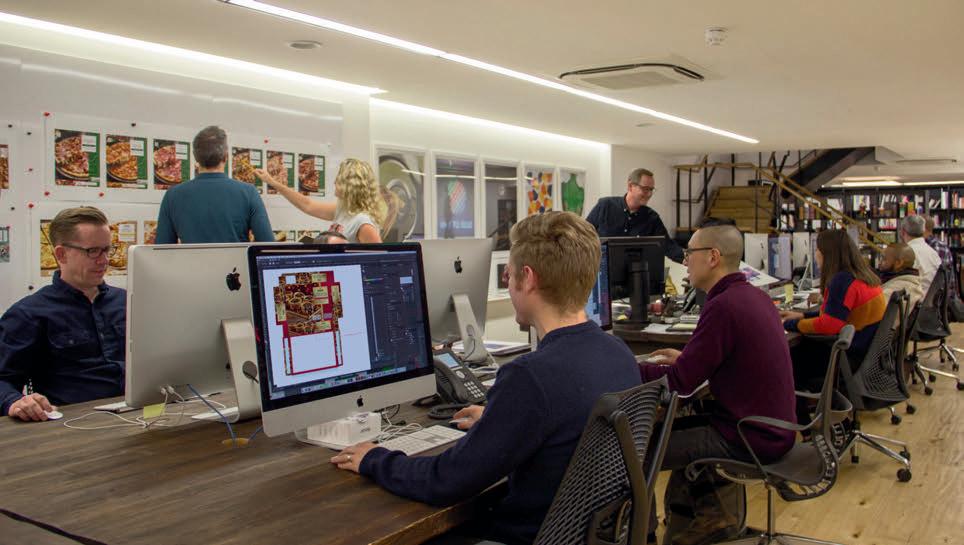
Secondly, whilst specialist production or repro agency charge-out rates were often significantly cheaper than those from the strategic agency, the amend prices incurred on files that needed to go around again because of any misinterpretation they introduced meant that any financial gain might be lost, as might the speed advantage.
Of course, the other key consideration for the strategic agency was the loss of a considerable amount of production revenue: not good, particularly when clients at the time were looking closely at all other aspects of strategic agency rates.
20 pxpiq.com
theReview
Tension between Procurement and Marketing
All of this added to tensions between procurement and marketing as, despite procurement wanting the money win, the client (marketing) and the strategic agency would more than often win the day, largely on the brand integrity, creative interpretation and preservation front – a strong argument, and one that was somewhat enhanced if the production or repro agency failed to deliver on its promise of improved costs and speed. Thus, decoupling didn’t always happen, with often brand degradation and false economy being the reasons not to do it.
Recent times however, prompted by market forces, have seen the quiet re-emergence of decoupling and its concept, but this time with a clearly defined solution to the above challenge in the form of a new breed of agency, and with it, a new descriptor – arise, the Adaptive Agency.
The rise of the adaptive agency
The job of the Adaptive Agency is to provide that all important creative interpretation to campaign roll out, whatever the channel, acting as the bridge between the strategic agency, responsible for strategy and design and the production and repro agency, responsible for final artwork, repro and print technical specification. And in doing so, leaving strategic agencies and production agencies to do what they do best.
How does the Adaptive Agency model work in practice? We find that a useful way to think of the work of an Adaptive Agency is that we apply a lens – or dual lenses, focusing on both
creative (upstream) and production (downstream) needs and wants. As well as acting as brand guardian, and overseeing brand integrity according to Tier 1 guidelines throughout this process, we ensure that creative intentions and production realities meet harmoniously and consistently, delivering the optimum result for the client, whatever the media or format required. If applied correctly, what the Adaptive Agency provides the production and repro agency will make their lives much easier. This adaptive process also includes art direction and photography, ensuring a consistent approach to imagery, within the intended Tier 1 vision.
Tesco
Whilst an Adaptive Agency and its capabilities are channel-agnostic, packaging is one vertical that has quickly embraced the concept, with most large retailers and brands now having Adaptive Agencies on their roster. One such retailer is Tesco, which has been working with Adaptive Agencies for around three years.

Caroline Kelly, head of packaging design at Tesco, explains: “We’d been collaborating with our lead agency
partners on needing a more streamlined, smarter solution in advance of us working via a new three tier agency approach to creative delivery for our packaging”.
“Of course” continues Kelly “with any change can come risk, but the comprehensive trials we carried out with two proactive partners who actually refined their adaptive entities at the time were hugely successful and more than proved the model”.
But Kelly concludes “Our ranges sometimes have hundreds of SKU’s, often involving multi colour, multi process print across various substrates all needing to be visually aligned to the brand and be fully colour correct. For any Adaptive Agency, an acute understanding of design intent and what can technically be printed regardless of process, is key”.
At Branded, to make sure that we are able to deliver the right level of service to Tesco, we have a sizable team based onsite at the clients headquarters, part of which acts as a natural extension to Tesco’s in-house design team. These adaptive experts have a multi-faceted role to play.
Whilst it could fundamentally be summed up as project management, our team’s duties include problemsolving and brainstorming, brand guardianship, art direction support when required, collating assets, liaising and ensuring smooth communication between project stakeholders, and driving projects forward to make sure that deadlines are successfully met.
A key factor in the success of our model is undoubtedly the wider agency collaboration we are able to provide within Branded, which when combined with adaptive, can deliver even greater efficiency and improved speed to market. There is a fine balance between creative interpretation and delivery at speed, and based on our client’s feedback, it’s evident to us that we have achieved that balance.
And as a final footnote on decoupling, we believe that having gained approval from both procurement and marketing the Adaptive Agency is here to stay. R www.branded-agency.com
21 pxpiq.com
Partner content__Branded
We now have a recognised and increasingly used three tier reference in the industry with Strategic Agencies being Tier One, Adaptive Agencies Tier Two and Production Agencies Tier Three.
Key considerations in multilingual content purchasing
 By Lindsay Hong COO LOCARIA
By Lindsay Hong COO LOCARIA
22 pxpiq.com theReview
Local language content is becoming a necessity for more and more companies as they seek international growth opportunities. Internet connectivity is growing across the world, with the demand for digital multilingual content being driven by exponential growth in multimedia and e-commerce. This has been further strengthened by the COVID-19 pandemic. According to Common Sense Advisory’s ‘Can’t Read, Won’t Buy’ study, consumers from nonAnglophone countries overwhelmingly prefer content in their mother tongue1. Approximately 74% of respondents also say they’re more likely to purchase from the same brand again if the after-sales care is in their language.
At the heart of any international growth strategy is the need to execute a communications programme which drives growth. There is increasing pressure on global brands to be sophisticated with their local marketing approach in order to achieve customer intimacy, meaning a complex array of formats and channels have arisen. Traditional suppliers of multilingual marketing have picked up on this trend and are keen to sell as many words as possible. Indeed, over the last ten years, the global multilingual marketing industry has doubled in size, reaching a total value of $46.9 billion in 20192 . However, as brands recognise the increasing cost of this, conversations are turning to ROI and cost reduction. Increasingly, procurement departments are being engaged to help drive down language
service costs and purchasers are looking for tech solutions to help keep content budgets under control3



Despite this rapidly evolving landscape, the most commonly used model for purchasing localisation or copywriting services is still a per-word rate based on the known or estimated number of words to be localised or written. In a bid to keep pricing ‘simple’, word rates are becoming highly opaque as they fail to represent the changes taking place in how multilingual content is delivered at scale, particularly for media and marketing. Purchasers are being subjected to hidden costs and suppliers are trying to make the numbers work behind the scenes.
Now is the time to improve pricing transparency in multilingual content and marketing services, build trust, and increase understanding of the true value that multilingual content brings. It is essential for procurement and brand owners to build further understanding of the processes through which effective multilingual content can be created and what is driving costs for suppliers, to be able to ask more informed questions during their procurement processes. Locaria believes in only creating content that drives performance, not in content for
content’s sake. We also see it as an important part of our client relationships to ensure transparency and control over localisation spending. “We Grow Together” is one of our core values by which we work to push ourselves, our clients and our industry forward.
What is multilingual content?








These services include, but are not limited to, multilingual PPC, SEO, social media, website localisation, multimedia, and market research. At the production level, this can include translation, localisation, transcreation, copywriting, transcription, subtitling, dubbing and voiceover.
Procurement teams are increasingly involved in the supply management of content service providers, particularly as larger organisations seek to bring together all the different streams of content production to maximise any economies of scale, or streamline their processes, while also driving content consistency. For many brands, this is a relatively new endeavour for their procurement function. As such, there is an opportunity to educate and keep procurement teams up to date with the myriad processes and considerations involved in purchasing content or multilingual marketing services, so they can better evaluate potential suppliers and increase purchasing transparency.
The key stakeholders and decisionmakers for purchasing these services may be many, even within one organisation. Marketing Directors, Editors, Brand Managers, Ecommerce Managers, Media
23 pxpiq.com Partner content__Locaria 1 CAN’T
2
READ, WON’T BUY, CSA RESEARCH.
MARKET SIZE OF THE GLOBAL MULTILINGUAL MARKETING INDUSTRY
2009-2021,
STATISTA.
3
AI, MACHINE TRANSLATION & THE FUTURE OF LANGUAGE,
theReview
Planners, Paid Social Planners, and Heads of Planning are typically all involved in creating brand or advertising content using external suppliers. Likewise, Customer Service, Legal, Compliance, and even Distribution teams create content that may need to be consumed by speakers of multiple languages, be they customers or internal employees.
Where there is a significant volume of regular content being created that requires translating into other languages, companies may employ Localisation Managers to oversee this process either by handling the content internally or outsourcing to suppliers, or a mix of both.
The principles of transparent pricing apply regardless of industry vertical, so are relevant to all purchasers. However, it will be particularly relevant to those seeking nuanced, creative content that supports brand awareness, and customer acquisition across borders, as those processes tend to be more complex, evolve at speed and have a direct impact on revenue generation.
All pricing models are built on the foundations of the relative cost of languages, the volume of content to be processed and delivered, and the methodology of delivery, which drives the expected quality of the output.
The relative cost of languages
Technology and automation continue to make an impact on content production processes, but as a rule of thumb, and certainly for creative or marketing content, the majority of language production is built on human expertise and has human endeavour at its foundation. Arguably all language service providers employ people to write or localise content, often across a wide range of languages. These individuals often work on a freelance basis and may have specialisms such as legal translation, medical translation, or social media copywriting. They tend to charge language service providers a fee based on their word rate or hourly rate. While their experience, training and industry expertise will have a bearing on their rates, in general, the biggest driver of differences in pricing is the language pair they provide the service for. Most localisation is still English target language, with the target language being the driver of the cost. Broadly, language costs map to relative GDP, but there are always notable exceptions for “rare languages” and dialects, where there may be fewer qualified linguistic resources, or when demand for a certain language spikes. An example of a rare language could be
Economies of scale? When the word count makes a difference
The concept of a word count seems simple enough at face value. It is essentially a tally of all the words in a piece of text.
This is important because many straightforward translation projects are still priced per word on a word rate, so as a purchaser, if you count repeated words only once, the total number of words reduces and therefore lowers the cost.
A translation memory is a database of translated words and phrases which
can be gradually built and used to reduce unnecessary repeat translations.
When purchasing content services, it is important to consider the repetitiveness of the content you’re creating or localising and to ensure that the right technology is used by the supplier to maximise the benefits of any repetitions. If purchasing on a word count basis, you should always ensure costs are calculated on the weighted word count.
Norwegian. Norway is a wealthy market, however, the population is small and has a scarcity of linguists which means that demand outstrips supply and inflates pricing. Similarly, events such as the Chinese New Year or the Olympics may attract a spike in demand for certain language combinations.
The word or hourly rates charged by the individual writers or translators form the basic building blocks of the cost of production, so underlie all pricing models.
When procuring multilingual marketing or content services, it is worth considering which languages and markets will drive the highest demand. Purchasers must also understand that the cost to suppliers of serving Nordic markets, for example, will be significantly higher than Latin America. If this is not evident in pricing, it is worth asking why. As the rates vary by market, this should be considered in the business case for creating content for a specific market.
Online content is booming
Online content is booming, with growth in non-English markets fuelling the need for smart approaches to multilingual digital content production that avoid spiralling costs and low ROI.
A variety of content creation methodologies are available to respond to this demand, each with different results in terms of output quality.
However, it is important to be realistic about how repetitive your content is and recognise that there are no economies of scale across languages, so a high volume of content, made up of lots of small pieces across multiple languages, will be unlikely to reduce costs.
It is important to work with a supplier who can leverage language technology like translation memories to make the most of efficiencies where they exist.
These methodologies require increasing levels of creativity, time and consideration, which cannot always be well-represented in a word rate. Additionally, while advances in machine translation are exciting, it remains only one part of the content production process. The effective use of this new technology requires careful planning, management, and quality control, which again requires human resource, so cost savings may not be as appealing as initially expected.
It is important to ensure both purchasers and suppliers have a thorough conversation about the definition of acceptable quality for deliveries. This conversation can be greatly aided by ensuring business
24 pxpiq.com
outcomes drive the choice of methodology. It is not always necessary to localise everything, but more important to deliver appropriate quality for the desired outcome. This may not reduce overall costs, but increase ROI on content production spend.
When it comes to pricing models, word rates are still relevant for simple projects with repetitive content and significant volumes. However, to really
drive customer engagement, a more consultative approach to content creation is necessary, with ongoing research and optimisation utilising marketing expertise and hard data. This effort also cannot be wellrepresented by word counts. Instead, expected throughputs or time spent should be reflected in commercial models. Retaining a team can be a better investment than purchasing on a project basis, and will ensure your
Key Considerations in Multilingual Content Purchasing
Statistical Machine
Translation & Human Post Editing
Human Translation
• Very cheap and fast
• Very low quality
• For simple, repetitive, non-creative and noncritical content
• Entirely based on the source, no adaptation to format
• May include review
• As close and direct as possible
• For simple, standardised content with limited local nuance
Localisation
• Translation of core messages
• Adapt and optimised to target format
• Includes review and support local nuances
• For a more natural, authentic feel, but limited results for creative content
Transcreation
• Extract tone of voice, style and intent
• Recreate in target language and format
• Authentic and nuanced
• For creative and commercial content expected to drive engagement or emotional responses
Origination
• Background and data research of topic
• Originate target without source, directly into appropriate format
• Highly fluent and nuanced with no influence of another language or style
• For creative and commercial content expected to drive engagement or emotional responses
• Important for branding or humour
content is both consistent and competitive.
An evolving landscape
Multilingual content services have seen a huge evolution over the last twenty years, with new methodologies and technologies, an increasing number of languages requiring content, and the need to adjust to the requirements of online platforms. Navigating this landscape is complex and requires a multiskilled team that can fuse data with creative skills to deliver the best ROI on localisation spend. Companies like Locaria provide such skilled teams who can help brands ensure that content production meets business needs and is not focused on simply creating content for content’s sake.
As a result, the human contribution to multilingual content production is more important than ever and should be clearly and transparently indicated in commercial negotiations. This means moving away from simplistic word rates to more sophisticated pricing models, such as retainers with rate cards that can be monitored in realtime and give brands control over where effort is focused.
At Locaria we believe that providing pricing which truly represents the value-add of our services not only leads to better commercial decisions, it also allows purchasers to ensure all the steps required to deliver high-performing content are actually being done. We are passionate about taking the subjectivity out of multilingual marketing and helping purchasers make informed decisions, even when they “don’t speak the language”.
Copywriting
• Research subject and devise topic independently
• Highly fluent and nuanced with no influence of another language style
• For creative and commercial content expected to drive engagement or emotional responses
• Important for branding or humour
To learn more about how Locaria can help you build consumer trust through localisation and translation, call us on +44 (0)20 3948 6800, email hello@locaria.com or request a quote via locaria.com.
Increasing quality, cost & time Increasing quality, cost & time Increasing quality, cost & time Increasing quality, cost & time Increasing quality, cost & time Increasing quality, cost & time
25 pxpiq.com
Partner content__Locaria
Lindsay Hong, COO, Locaria. As a member of the board, Lindsay is responsible for setting the company strategy, owning the brand, and overseeing the people, process and tech evolution at Locaria. Prior to Locaria, Lindsay worked client-side in e-commerce, developing new businesses and expanding into international markets with some of the world’s leading brands. Lindsay is fluent in Mandarin Chinese, having lived and worked in the APAC region, and serves on the council of the Association of Translation Companies.
Why advertisers must not rely on media buying templates as a one-size-fits-all

 by Nick Swimer
by Nick Swimer
Like Moore’s law, the number of ad-tech and mar-tech intermediaries promising brands improved targeting and marketing intelligence seems to double each year and has led to an advertiser inventory buying chain that is in fact, no longer a chain at all; rather it is a whirlpool or even a lattice in which relationships and click wrap contracts cross a multiplicity of operators before finally arriving at the publisher or advertiser (depending on your perspective).
The recently published ISBA media planning and buying template was met with wide interest and debate from the ad industry. It sought to address some thorny issues that previous versions had perhaps only flirted with and also try and address the increasing complexity of programmatic buying; allowing the parties to focus their attention on the real value of the contract – the price and quality of the inventory across media and markets.
Advertisers must not, of course, treat these industry wide templates as the finished article. This approach has undoubtedly led to a loss of value for many. Whilst these templates set out the broad overall service framework and intention to operate in an open way, it is simply not possible for them to reflect the structure of the commercial deal, the markets within scope, the programmatic buying solution or indeed solutions adopted, and the manner in which the advertiser and agency are set up to govern a
partnership – so the agreement needs to be specifically tailored to address all of this.. What is more, brands will have their own approach to evaluating performance, reporting requirements, financial and billing processes and approvals for authorising budgets and media plans, all of which needs to be reflected in the agreement. They also have their own sensitivities in relation to using data and the basis on which they will purchase programmatically.
All of these factors will differ from brand to brand and indeed agency to agency, so a standardised template is only half of the story.
Regional or Global frameworks
Crucially, the UK trade template only speaks to the principal buying model operative in the UK and infers UK laws. The ANA template approaches the agreement from the lens of a US media buying model. In this model, the agency is an agent-in-law, and the agency has all of the attendant obligations of a fiduciary when buying media. Digital media buying in the US is also often undertaken on industry negotiated terms. As such, brands should keep in mind that these templates are designed for domestic planning and buying rather than a regional or global framework. An international approach to media planning and buying
agreements requires businesses to take account of the different buying practices, customs and sensitivities of the various markets within the scope. It is true of course that some of this can be effected through supplementary local service agreements, but advertisers will often be keen to ensure that any framework agreement harmonises the approach across all markets. This avoids local service agreements becoming an opportunity for a wholesale renegotiation of terms.
Broad church
It is important to remember that trade associations represent a broad church, and some members may have experienced issues that are not addressed in any template or disagree with the rationale its trade body has put forward in relation to a position (as either too aggressive or not aggressive enough!). For example, there remains a lack of consensus around free inventory(so called ‘value pots’) and how this should be apportioned between clients and brands may approach the calculation of Net Media Spend through an entirely different commercial lens depending on the purpose of the definition and what cost it is trying to capture (particularly in relation to digital advertising).
Inventory media also remains a battleground. The challenge of really capturing what this means in markets where all media is acquired by the agency as principal to contract remains.
A fair contract must be balanced against all factors and agencies should not assume that they can ‘bank’ any concessions that a template may appear to include, particularly where they creep into the commercial terms.




Trade associations should be applauded for their significant work in seeking a settled industry wide framework, but as no doubt ISBA and the ANA would agree, they require significant tailoring and are not simply a ‘plug and play’ solution. R
Nick Swimer, Media & Entertainment Partner, Reed Smith reedsmith.com
26 pxpiq.com
theReview
Building trust in transparency

Contract Compliance Auditing has become a regular practice for many advertisers due to the ever-increasing complexity of the media landscape. There are an increasing number of different organisations involved in the planning and buying supply chain, all with their own commercial interests, that are not always aligned with the interests of the client.
Advertisers need to be sure that they have received the best independent advice that delivers on the transparency promises of their relationship and contracts. Contract Compliance Auditing does just that...
But it’s not just the media system that needs advertiser focus. We are seeing increasing opaqueness within the non-media supply chain and advertisers are auditing their creative, production and BTL agencies like never before.
With over 20 years’ experience conducting marketing compliance audits in over 110 countries, the Media Marketing Compliance Audit Team is a trusted local and global partner to the leading advertisers, providing audit services all the way through the marketing supply chain.
Media
Marketing Compliance are a global organisation with offices across the world.
ProcureCon Marketing
To learn more visit Stand 8 at
Conference 14-16 June London
Broderick stephen.broderick@mm-compliance.com or Jane Dormer jane.dormer@mm-compliance.com or visit mediamarketingcompliance.com M ed ia M arketin g C o mpliance
Contact Stephen
Embracing the future
How innovation in production is helping eg+ worldwide meet increasing demand for content at scale.
In 1995, Bill Gates was asked by talk show host David Letterman to explain this new thing called the internet. Gates responded by explaining how it would change our lives and shared an example of how it would allow on-demand transmission of baseball games around the world. Letterman joked that that sounded an awful lot like the radio while the audience burst out in laughter. I assumed everyone in that room then was convinced the internet would never make a meaningful impact on their lives and wow, was that difficult to watch.
Both on a personal and an organisational level, innovation is often met with skepticism. It’s hard for us to embrace and adapt to things that are radical, or could disrupt how we currently do things, so we often respond with a general sense of unwillingness to change. Like Bill Gates in this interview, those at the forefront of innovation often have to defend new concepts and face ridicule while they wait for the rest of the world to catch up.
Are you a leader or a follower?
Written by Jonathan Leck Global Director Digital Innovation eg+ worldwide
Today, innovation is vital to every business in every sector and can be the difference between success and failure in the long run. At eg+ worldwide, we’ve worked really hard to make innovation part of our brand DNA.

28 pxpiq.com
theReview
Innovation allows us to build a perspective about trends and respond to them. We also remind ourselves that innovation isn’t always about creating something new. It can also help us to find more efficient ways of working by optimising or repackaging existing products. Innovation helps us see what opportunities will pop up in the near future, and better prepare ourselves and our clients to meet new demands. Ultimately, it’s about becoming the future and not chasing it.
As exciting as this sounds, it naturally has its challenges. Working in a culture of continuous discovery, revamp and maintaining an “Always in Beta” mentality is very demanding on resources but innovation management systems have come a long way to help teams address that.
Eventually, we start to see innovation become a value-adding component in our offering to clients as they can expect to extract more value from our services as we continue to refine and upgrade them over time.
How do we manage innovation on a global scale?
To maximise our innovation potential
at eg+ worldwide, we have carefully assembled a global network of channel experts, technologists and studios to monitor trends in creative content production and accelerate our forefront capabilities through innovation workstreams.
Executing such a programme on a global scale is made possible by a threestage innovation system that we call Innovation Labs. This is designed to leverage the knowledge capital and creativity of our people, and provide them with a framework to develop ideas into real-world applications.
The three stages of the system are Discovery, Incubation and Acceleration.
1 Discovery Forecasting trends and conceptualisation of ideas

This stage is about predicting emerging trends by constantly monitoring and assessing the market impact of new technologies and products, together with eg+ network innovation surveys and our global innovation submissions

platform to form a network of discovery instruments that feed into the innovation management system.
2 Incubation Translating knowledge into capability

Specialised labs across the network are activated to experiment, prototype, and evaluate new products and skillsets. This is designed to be an iterative cycle of experimentation and learning, which has allowed us to advance innovation projects without the constraints of customer delivery. It is a collaborative space that recognises success even in failure.
3 Acceleration Scale and optimise

We transform innovation prototypes during Acceleration into client-ready products and services. There is often an injection of additional funds and resources at this stage to rapidly scale across our network for deployment, communication, activation and optimisation.

29 pxpiq.com Partner content__eg+ worldwide
Spatial is an example of a partner who has lowered the entry barrier to hosting branded virtual events while keeping the openness and interoperability of a metaverse Source: eg+ Innovation Virtual Room on spatial.io
theReview 7
Innovation Categories
eg+ worldwide Innovation Labs have given us unique access and insight into the future. To help you form your own opinion and to develop your own opportunities, we thought we would share some of the trends that we’re most excited about. So, here are seven innovation categories that we believe will shape the future of creative production
Ad Tech and Ad Automation
With the internet moving into a decentralised Web3 era, there is a lot of debate about marketing opportunities that may or may not exist. From an ad automation perspective, we are seeing more platforms pivot from multichannel to omnichannel set-ups in response to the increased democratisation of data. We aim to focus on the innovation that comes out of these shifts by evolving our more traditional processes to more data-first and automation-first processes.
ACTIVE PROJECTS Social Media Ad Automation | Real-time DOOH contextualisation | Creative Automation Platforms | In-game & Metaverse Ad Formats | Virtual Replacement Technology (VRT) | Dynamic Ad Insertion (DAI)

Synthetic Media
Also known as AI-generated media, synthetic media is a catch-all term for artificial production and the manipulation of media using artificial intelligence. Recent advances in machine learning models, like Generative Adversarial Networks, or GANs for short, have significantly improved the range and fidelity of image and video generation. We believe that synthetic media will continue to bring down the complexities and cost of producing high-quality content and change how we scale and manipulate audiovisual assets for our clients.
ACTIVE PROJECTS Synthetic Videos (Deep fakes) | AI-Language & Speech Manipulation | Synthetic Voice Generation | Generative Adversarial Networks (GANs) Art | AI Music Composition | AI-Generated Humans (Digital Humans)

3D and CGI
As society continues to blend reality with digital, so has the advancement of 3D and CGI production. We are now in a stage of innovation where there is a push to remove barriers between liveaction and CG by using virtual and AI-assisted production techniques. There is also a demand for more 3D content due to recent popularity of Metaverses and other virtual worlds which require less traditional 3D
design and more code-based 3D development. This is moving quickly with game engines taking over as leaders in 3D format output and its endless possibilities with real-time rendering.


ACTIVE PROJECTS 3D Real-Time Rendering (Videos) | WebGL 3D Environment | Code-based 3D development (Unity & Unreal) | AI Motion Capture | LiDAR 3D Modelling | Dynamic 3D Creative Optimisation | Virtual Production | Virtual LED Sets | AI Hand & facial recognition

Web DesignDevelopment, and UX
Today, web experiences have branched out onto numerous devices as connectivity and AI become more commonplace in our daily lives. The expanding category of nonconventional displays under the Internet of Things (IoT) means that web content optimisation practices are being tested. We are finding more ways to create effective web experiences with innovation; but even with the quickly evolving landscape, one principle
30 pxpiq.com
DeepMotion AI-Powered Motion Capture is able to create 3D body tracking animation from a 2D video in seconds.
Source 2D video by Anna Shvets
always remains true: the user always comes first.
ACTIVE PROJECTS Web Design
Automation | Low/No-Code Development (L/NCDPs) | AMPHTML Interactive
Emails | Headless CMS | Visual
Attention AI (VAS) | Wearable Web UI |
Content Management Automation
Immersive Experiences
Whether it is VR, AR, MR or XR, there is no question that brands will soon need to create digital experiences in these worlds to reach their audiences more effectively. Immersive experiences have the power to change how we interact with everything and the AR/VR market is expected to grow to $76 billion by 2030. We need to expand our capabilities across all sensory points to be ready for it.

ACTIVE PROJECTS Native Mixed Reality (MR) | LiDAR Gesture Tracking Projection | Mixed Reality (MR) Event Spaces | 3D DOOH Technology | Webbased Mixed Reality (MR) | Spatial & Augmented Audio | Projection Mapping
Language and Voice
Language and voice have the power to build bridges and technology continues to break down the language barrier with recent advancements in Natural Language Processing (NLP) & Text-To-Speech (TTS) AI. This is shown in the growth of the voice assistants category, which has increased across all age groups, with over 30% of users using it daily in the UK and US. There is also now an increased reliance on voice to make digital content more inclusive for audiences with hearing, reading or cognitive difficulties.
ACTIVE PROJECTS Natural Language
Generation (GPT3) | A.I. Language
Training Datasets | AI SEO

Extraction | Speech Subtitle
Ethics, Inclusivity and Sustainability
Keyword
Synchronisation | AI Copywriting |
Neural Machine Translation | AutoML

Text and Translations | AI Marketplace
Content Optimisation
Disruptive technologies come with new challenges. The speed of innovation is forcing us to change our worldview and add a new lens to create a safe and more inclusive experience for all. Building our knowledge and involvement with industry ethics communities, such as the Content Authenticity Initiative, helps us reach a higher ethics, inclusivity and sustainability code for ourselves and for our clients who are looking to navigate new spaces with innovative tech.
ACTIVE PROJECTS Open Voice Network | Inclusive Design | Web Accessibility (WCAG 2.1) | Content Authenticity Initiative | Consent-based Design (GDPR) | Biometric Authentication | Remote Video Production | Web3 Sustainability
Where could innovation take you?

Watching Bill Gates being laughed at while trying to explain the internet is a power reminder on how quickly technology can change the world. Innovation can inspire teams to evolve and overcome challenges by doing things differently. While everyone is gearing up for the monumental shifts Web 3.0 and the Metaverse will bring to the world, there is no better time to revisit your innovation strategies to help you build and improve your perspectives even if you can’t immediately see the opportunities today R
Jonathan Leck is the Global Director of Digital Innovation for eg+ worldwide. Based in the Middle East, he currently leads Innovation Labs, an innovation programme to help the agency develop its knowledge and capabilities in emerging trends. He has over 12 years of experience leading digital production teams at global agencies in Singapore and Dubai, with a heavy focus on helping clients transform digital marketing with data-driven solutions and creative automation technologies.
eg+ is a content production, adaptation and localization engine. Driven by a desire to provide agile, high quality, cost-efficient, outputfocused content for any channel, in any market. If you are looking for an innovation collaborator or interested to learn more about what we do, please contact me at jonathan.leck@egplusww.com
31 pxpiq.com
Partner content__eg+ worldwide
Insights from the Women of Influence Series
Producers & Procurer’s Women of Influence series seeks the best talent in the marketing procurement and creative production landscape, highlighting and celebrating the strides women are making in the industry. Plucking the highlights from some of our interviews, here we will assess the key takeaways, outlining the ways women are changing and evolving the sector. To read the interviews in full visit pxpiq.com and go to the Big Interviews page.

32 pxpiq.com theReview
The series is supported by our content partner Decideware
Mary Ann Brennan
An inspirational futurist in the world of marketing, procurement and advertising
>> Executive Level Consulting at Alpha St8 Consulting
Mattel where she recalls flagging inclusivity concerns with the Westerncentric look of the traditional Barbie doll in 2007, Brennan has undoubtedly worked in some titan roles in her time.
As an Operations, Marketing and Procurement Executive Consultant and employee, Mary Ann Brennan ventured into procurement from marketing and has been an influential figure in education and awareness of the sector.
Brennan’s marketing career, which spanned 17 years, included leading and being a part of data-driven marketing efforts that have only become more prevalent. Such efforts,
which were ahead of the curve in her time at Wells Fargo Bank, which featured ATM QR codes, mobile payment marketing and various eComm and online marketing work. As a marketer, she has also previously held roles at California Credit Union, Time Warner and Bank of America.
From working with brands such as adidas as Head of North America Procurement and entertainment brands Yeezy and Kanye West, as well as
Claire Randall
Clarity is the key to unlocking efficiencies

>> Founder and CEO at Claire Randall Consulting
In Brennan’s Women of Influence interview, she highlights the disparity often discussed between marketing and marketing procurement, that boils down to education. This is an area which she is keen to implement and integrate into the broader education system, aspiring to inform students of the art and science of procurement – which she explains is largely neglected.
“The challenge we
face in the world is that most marketers don’t know how to run a business and most procurement people don’t understand marketing. So there is this constant disconnect, but it is neither one’s fault”, she explains.
Brennan also discusses the barriers for careers in procurement. “A lot of people graduate and don’t even know what procurement is. Nobody seeks a procurement career as a youth out of college”, she comments.
Claire Randall Consulting (CRC) started almost by accident. While at Saatchi & Saatchi, Randall worked on a number of major brands, regularly bringing jobs in under budget. One of her clients was a global FMCG advertiser that increasingly wanted to take greater control of production costs, though they had little knowledge and understanding of production internally.
CRC has developed from a heritage of cost
control to production consulting. It’s now a much wider remit, working with around 50 leading advertisers across the globe, with a combined production expenditure under management of £225 million in 2021 alone. From a team of four when Randall had just the one client, CRC now has 45 consultants worldwide, all of whom are subject matter experts. As well as the challenge of decentralised marketing structures,
Randall says that the proliferation of marketing channels, whilst creating increased opportunity for customer engagement, requires more and more content and the challenge is how to produce the quality and volume in multiple formats for the same, or a reduced, budget. This domino effect then impacts on the amount of time for production as brands need to create more deliverables for TV, digital, social, PR and so on.
Randall says the only way to meet the twin challenges of time and money is to have a holistic view of the total production ecosystem, from
beginning to end, in order to reduce duplication, improve creative repurposing through increased digital asset utilisation and a cohesive communication policy for all stakeholders and production partners.
This is a role that Randall says CRC fulfils with tremendous effect for brands because of the insight and expertise of their consultants and, most importantly, being independent as they work exclusively for the brand.
33 pxpiq.com __ Women of Influence
theReview
In the realm of procurement, Chief Revenue Officer Sarah Scudder runs growth, strategy and marketing at SourceDay. She is responsible for developing and implementing a unique content-driven marketing and sales strategy for a print sourcing Software-as-aService (SaaS) application. The software application saves between 14- 22% annually for RSN clients. It also unlocks the power of technology in this space.
RSN helps clients to be strategic about their spending and, through their global supplier
base, will outsource the process for them: “We have a global supplier base. We will go out and bid for the specific type of work. If a client is needing a label, we will send it to the best printer for that label. We run bids for the best suppliers for those projects,” she explains.
She also urges that procurement needs to start thinking about the entire supply chain when making any supplier decisions.
“Many procurement leaders forget about this when negotiating the last dollar out of a deal,” Scudder said.
Scudder has traced the increased turnover of procurement talent
Pamala Buzick Kim
The journey that led her to Free The Work for underrepresented creatives
>> Executive Director at FREE THE WORK
and believes it is largely due to a loss of work culture and pandemic uncertainties. She believes it is on procurement to work out how to retain talent and build equity into working remotely fulltime, as well as catering for those who have a more blended approach.
Procurement will need to grapple with this new model, and take a step back, alongside marketing, in a post-pandemic world to establish how they can bring more value.
“I think consumers started realising how much waste they generated once they were stuck inside for a year and half, especially because they have been buying more things online. They are seeing how their garbage and recycling cans are overflowing. It becomes a problem
community then you will have a production set that is more diverse. Representation is important because it impacts a story”, Buzick Kim urges.
once people see it,” she says on sustainability.
In Scudder’s view, this consumer pressure, especially from millennials, is an incredible opportunity for marketing procurement to incorporate sustainability into their purchasing practices. For instance, sustainability can be embedded into RFPs and supplier management, revolutionising the industry, and ultimately increasing sales, boosting revenue and reducing costs. Scudder believes sustainability concerns will shape the industry in the near future.
Jillian Gibbs
Ever the optimist and Titan 100 CEO
>> Founder and CEO of Advertising Production Resources (APR)
Owner of the trademark “Production Optimist®” and founder and CEO of Advertising Production Resources (APR) Jillian Gibbs strives to redefine the role of the production consultant over 21 years.
As Executive Director at FREE THE WORK, a nonprofit initiative dedicated to identifying systemic inequalities and expanding access for underrepresented creators, Pamala Buzick Kim’s work in advocacy and inclusion is grounded in her own background and career trajectory.
“I didn’t grow up in a great neighbourhood and my family were at the lower end of the socio economic stature.
In high school, my Dad had been pretty determined that I would be going to the military because we couldn’t afford college… My high school drama teacher really jumped in and saved my ass and got me accepted at the California Institute of the Arts”, she says.
“We focus on what goes on behind the camera. We statistically know that if you have a director who is from a marginalised
She continues, “I know people are working really hard on representation in front of the camera, but the thing with having representation behind the camera is that diverse directors can call out things that aren’t authentic”. With this point comes the huge nuance of what authenticity is, and she praises the work of Libresse/ Bodyform and their award-winning “Blood Normal” campaigns which mark the difference between
male directed content of female menstruation, as well as #WombPainStories directed by a woman. Buzick Kim emphasises, “just because you have a female product doesn’t mean that it should only be directed by women”.
Here, authenticity comes down to the specific campaign rather than the product itself but ultimately at times can require a female perspective to be truly authentic which must be reflected in the direction.
‘We are Production Optimists!’ shouts APR’s registered tagline, Gibbs most definitely conforms to the sentiment when talking about how the advertising industry should transform, modernise and optimise the traditional approaches to producing ads. “The advertising production industry hasn’t changed much in 70 years, but now it needs to change to keep up with demands of the modern marketer,” says Gibbs. After 21 years of APR, she is undoubtedly an expert in the field, and was recently awarded the Titan 100 award for top 100 CEOs in Colorado. On
C M Y CM MY CY CMY K 34 pxpiq.com
Sarah Scudder
Passionate for procurement and people
>> Chief Marketing Officer at SourceDay
To learn how Decideware can help bring financial clarity and performance insights to your agency relationships, visit Decideware.com | Email: Info@Decideware.com
being a leader, she says “I lead with my heart by putting people first, but I also love to rewrite the rules and create new ones where possible.”
As her Dad taught her, the golden rule for business – as much as anything else – is to “treat others as you would like to be treated. Relationships matter.” I encourage APR colleagues to think about our client’s money as their own and be very judicious in how it’s spent.”
APR continues to grow through the pandemic, and Gibbs admits, “the pandemic gave me, as well as APR, the space to think more deeply about what really matters.” Over the last 18 months, APR has stood up DE&I and sustainability programs to support its clients and amplify
both areas to educate and influence the industry at large. APR joined the ANA’s Alliance for Inclusive and Multicultural Marketing (AIMM) to “elevate multicultural and inclusive marketing to promote business growth in an increasingly diverse marketplace.”
Gibbs comments, “There is plenty of room for everyone to have a role and to be successful, as we collectively challenge and change the approach to production to serve the evolving needs of marketers”.
Nicky Russell
An anomaly who went from agency runner to COO in eight years
>> Partner at WDC
design the change with our clients, we deliver it with them and we don’t leave until they are confident in the new approach and ways of working”.
Reclined in the bath with her hair stacked high in an elaborate crown, Princess Margaret beams from the top of Nicky Russell’s LinkedIn profile.
As a selfproclaimed royalist, Russell, a Partner of creative operations consultancy WDC, explains how she has an affinity for the royal family, for the unconventional royal who rebelled against the system. “I think challenging old attitudes and infrastructures is probably in my blood”, she adds.
Russell says that WDC are noticing an evolution in the remits of the IHA, which presents challenges.
“A lot of brands are
evolving from what we call ‘a service provider’; where the business will provide instructions to their IHA which they will fulfil and deliver, to wanting a creative and strategic partner who they can work collaboratively [with] to find solutions”. As well as this, she says, they are also witnessing a growing number of internal agencies wanting to be more ‘digital first’. She explains that both challenges require a massive shift and step change, not only in the process and people, but also in its behaviour. WDC helps incorporate behaviour change into every aspect of operations, as Russell says, “We don’t just
In order for the industry to work to improve creative operations, Russell believes that this must firstly come from greater recognition at boardroom level, “In the leadership team, actively having an opinion and shaping how to evolve the agency offering based on evolving internal and client needs”.
Russell quotes keynote speaker Nils Leonard at last year’s Henry Stewart virtual Creative Ops conference, “You can have the best ideas in the world but if you can’t deliver them, you are just talking to yourself”.

36 pxpiq.com theReview
Jillian Gibbs
from page 34
>>Founder and Principal of Tina Fegent Consulting
Jo (néeFennCoombes)
Spearheading creative production towards a more sustainable future
>>Project Director of AdGree
percentage”, feeding into the more collaborative mindset needed for sustainable practices.

As one of the better known names in the marketing procurement space, Tina Fegent is a marketing procurement Evangelist.
coming out of the pandemic, the most successful procurers will be the ones who are co-located and they are seen as an equal partner”, she urges.
Jo Fenn’s lightbulb moment for AdGreen came in 2014 when she was flicking through a magazine on holiday and came across an article on BAFTA’s albert, an environmental organisation aiming to encourage the TV and film production industry to reduce waste and its carbon footprint.
“I was a Production Manager at the time and I had seen firsthand how much waste there was on set, and like a lot of people I thought: what are we doing and what could be better? I was really inspired by albert”, she says.
Project Director of AdGreen, Fenn’s UK initiative unites the advertising industry to
eliminate the negative environmental impacts of production, and enables the community to measure and understand waste and carbon impacts with their carbon calculator.
“AdGreen provides tools, resources, and training to the advertising production community so they can measure and reduce their carbon emissions”, she explains.
AdGreen’s voluntary AdGreen Levy is a recommended 0.25% of the cost to produce an advertising asset, paid to those producing work for the advertiser, passed onto AdGreen each quarter to deliver industry resources. As
Fenn says, “the more advertisers who contribute, the lower we can make the levy
She continues, “It’s very much the ‘give a man a fish and you feed him for a day; teach a man to fish and you feed him for a lifetime’ idiom. The more people understand how to do these things [reducing emissions] themselves the more best practice they take onto their next job, and so on”.
This is something that has been wellreceived by the industry, and as Fenn explains, “When I started talking about AdGreen in 2014, it was like knocking on a closed door. Now it’s like I’m being pulled through an open door”.
Having started out in marketing procurement before marketing procurement even started out itself, her career has seen her move from brand to agency to consulting, and everything in between.
Building Tina Fegent Consulting back in 2006, she celebrated her 15th year advising clients across the globe on what marketing procurement really means.
Although she concedes that for some clients procurement is “all about money”, she believes that procurement should strive to be an equal partner.
In light of the WFA’s Project Spring, Fegent believes that marketing procurement should work closely with other parts of an organisation. “The ones [marketing procurement teams] I think work best are the ones with dual reporting and the ones that sit with their stakeholders… I think
Not only is this unity better for culture, but it also leads to a more strategic mindset: Fegent cites the pharmaceutical marketing sector as a key example of when this is done well.
On the procurers themselves, Fegent advises those starting out should “spend time on the other side” and “should put themselves in someone else’s footsteps on the supplier’s side”.
She urges that procurement leads should spend actual time with teams, and “not just go in and have a chocolate biscuit and coffee”. They should spend weeks, even months, working with the teams to “experience life on the other side”. Regarding this as phenomenal learning, she believes this will help procurers better manage themselves internally and their costs.
37 pxpiq.com
Tina Fegent
A marketing procurement Evangelist
__ Women of Influence
The Generation of Contrasts: What we can learn from

 by Jennifer Brown
by Jennifer Brown
theReview 38 pxpiq.com

39 pxpiq.com Partner content_Assembly
We live in a digitalfirst world. But Gen Z is the first generation that is truly digitally native. Described as creators, social and environmental justice pioneers, inclusion champions, and culture drivers – Gen Zers are also uniquely individual. And their behaviours are having an increasing impact on how global brands approach the modern consumer journey.
Understanding “Zoomers” is the key to brand growth in 2022 + beyond
Gen Z, colloquially known as “Zoomers,” are born roughly between 1997 and 2010. They are specifically unique from their predecessors, as they don’t know a time before the internet, living their lives through apps and instant communication with their peers. This makes them interesting consumers, who already make up for around $145 Billion in spending power, which is only estimated to rise.
Gen Z are a journey – not a set audience
Ranging between the ages 12-25, this generation encompasses several phases of life with varying interests and a distinct contrast between attitudes and behaviours. Take for example, their dedication to shopping sustainably while also being the largest consumers of fast fashion. Or the fact that they usually want to fit in with their group and peers, evidenced across platforms like TikTok, with trending challenges that see mass participation. If you miss out on that viral TikTok trend or recipe, the FOMO is real.
In contrast, Gen Z are also known for wanting to stand out from the crowd. They look for personalised products from brands to give them a unique edge. To provide a third contrast, this generation spends over 10 hours on their phone each day, but they place significant value on physical experiences as well as their wellbeing.
What makes Gen Z so contradictory?
This audience is so multi-faceted, and so nuanced, that it’s difficult to group them together. And it’s hard to know
exactly why or when their attitudes don’t line up with their behaviours. Maybe they shop fast fashion because it’s all they can afford. Or maybe it’s because they’re essentially on camera every day, and therefore have a more constant need to look on-trend. Or maybe, their allegiance to the climate crisis isn’t as strong as they claim.
The cultural impact at play
With all this said about the complexity of Gen Z, it’s important to remember that this generation has grown up with the pervasive trauma of the recession, the climate crisis, and the pandemic. And they’ve grown up with instant access, communication, and gratification at their fingertips. These unifying cultural moments, and the very nature of their upbringing, provide specific trends that are more widespread in Gen Z.
Purpose & Drive for Action
Gen Z is frequently commended for their commitment to activism in many forms, most notably in sustainability and demanding change from their governments. This extends to their relationship with brands, too. In fact, 75% of Gen Zers would prefer to buy sustainably than a brand name. This generation takes note of brands who live by their values and take a stance on key social issues.
Breaking Down Barriers
More connected than any generation before them, Gen Z meet friends and mentors through social media, gaming, and other online communities. It’s not unusual for Gen Zers’ best friends to be on the other side of the world. This hyperconnectivity on a global level increases their understanding of different people from various walks of life. They are quickly becoming experts on breaking down social and cultural barriers in terms of what we understand the world to be in labels. To demonstrate this, 75% of Gen Z say that their race, sexual orientation, or gender cannot be categorized. They prefer a more fluid way of being and they seek
this out in the brands they associate with, too.
The Need for Nostalgia
With all that’s gone on in the past decade, Gen Z understandably look to the past to seek comfort. This influences everything from fashion trends, the music they listen to, to the TV shows they watch.
It’s no secret that their obsession with Y2K has pushed many brands to rethink their marketing strategies or create entire collections dedicated to this nostalgic feeling of the 90s and early 00s. Gen Z have managed to romanticise this era to such a degree that many things that millennials might look back at and cringe over, are now trendy, like: bucket hats, blue eyeshadow, and lowrise jeans.
Authenticity
A marketer’s favourite buzzword. But being ‘real’ is key for this generation. Gen Z have acute awareness of the gap between the ‘fantasy world’ portrayed by brands and media, and real life, which is filled with global crises. Polished photoshoots and flawless models are on their way out, as this generation wants to see something rawer and more relatable.
Gen Z does their research before deciding if they want to associate with or purchase from a brand. This makes them less susceptible to impulse buying and more likely to see shopping as an experience to fulfil their self-expression. They enjoy going into retail stores and discovering new stories and products that connect to their values.
So, how can brands be part of these trends?
Brands need to evaluate the trends in relation to themselves and find where values overlap to create stories within campaigns to connect with Gen Z on an emotional level. We need to rethink creative copy and imagery, utilise innovative media placements, and partner with diverse and sustainabilityfocused platforms and creators to connect with this audience R
Jennifer Brown, Strategy Manager, Assembly
theReview 40 pxpiq.com
Until Gen Alpha grows up, “Zoomers” are defining the consumer journey. The time is now to put Gen Z first in your brand’s growth strategy.
The Top 10 Takeaways
1. Ranging from 12-25, Gen Z encompasses many phases of life, interests, and attitudes – and thus should be thought of as a journey, not a set audience.
2. Gen Z highly value social and environmentally conscious brands and prefer to shop sustainably – though they’re also big shoppers of fast fashion.
3. Gen Z like to fit in with their peers, often taking part in TikTok trends en masse.
4. Simultaneously, they like to stand out from the crowd, seeking rare and personalised experiences and products.
5. The connected experience of the climate crisis, pandemic, and uncertainty drive core behavioural trends amongst Gen Z.
6. A hyperconnected generation, Gen Z have friendships all over the world, breaking down physical barriers as well as social constructs.
7. Gen Z are a fluid generation, they do not subscribe to traditional ways of thinking about gender, sexuality, and race.
8. They cope with the difficult reality of the world today by looking to the past, seeking comfort in nostalgia.
9. Authenticity is a key factor that Gen Z looks for when shopping, as they link their identity with their purchases.
10. Brands should synthesise research on Gen Z and leverage top trends to create campaigns that connect emotionally with this generation

Assembly finds the change that fuels growth. We bring together data, talent, and tech to deliver global omnichannel media + business, technology, and data consulting solutions that help brands change as fast as the world around them.
assemblyglobal.com
41 pxpiq.com Partner content_Assembly
The quest for accountability in programmatic


With an unknown delta of 15% and the ANA launching a new study, what can advertisers do to stop wasting billions of dollars and funding an opaque ecosystem?
By Keri Bruce
Programmatic display spending in the United States is anticipated to increase by 16.3 per cent in 2022 to over US$120 billion, according to eMarketer. This increase is despite multiple separate studies by the World Federation of Advertisers (WFA), Association of National Advertisers (ANA), Incorporated Society of British Advertisers (ISBA) and Australian Association of National Advertisers (AANA) demonstrating material issues with the programmatic ecosystem, including lack of access to data, inability to follow money through the supply chain, inconsistent accountability and increasing complexity.
The WFA’s Guide to Programmatic Media (the “WFA Report”), which was published in 2014, was the first report that caught the industry’s attention and showed the waterfall effect of the costs of programmatic media. In 2017, a joint study from the ANA, the Association of Canadian Advertisers (ACA), Ebiquity and AD/FIN (the “ANA Study”) was released. The ANA study showed numbers that were slightly better than those estimated by the WFA – 58 per cent of an advertiser’s dollar is working media versus the 40 per cent found by the WFA Report. However, a key discovery in the ANA Study was that numerous advertisers, whether knowingly or not, had agreed that they would not have a right to audit or access the underlying costs for their programmatic media.
The joint study between the ISBA,


the Association of Online Publishers (AOP) and PricewaterhouseCoopers (PwC) (the “ISBA Study”) in 2020 found that 51 per cent of the study participant’s media spending was working media. While the overall findings at first glance don’t seem to be that different than the findings of the 2017 ANA Study, other important insights were uncovered, including that 15 per cent of participants’ analysed spend could not be attributed to anything within the supply chain.
Unknown delta

This 15 per cent ‘unknown delta’ could have been the result of a combination of factors, such as limitations in data sets, necessitating occasional estimations; DSP or SSP fees that aren’t visible in the study data; post-auction bid shading; post-auction financing arrangements or other trading deals; foreign exchange translations; inventory reselling between tech vendors; or other unknown factors. In addition, the ISBA Study revealed an inability to match data in the supply chain for the majority of impressions served by participants due to low data quality; complex permissioning structures leading to delays in access to data or making access impossible; inconsistent industry taxonomy; and hundreds of different supply paths to reach the same publisher.
Access to data
Finally, the AANA study with Method Media Intelligence (MMI) (the “AANA Study”) which was
released in 2021 ten months after the ISBA Study, faced similar hurdles to the ISBA Study when it came to access to data (including failure to have processes in place to share the data, data was not kept as long as expected and supply chain partners were not cooperative) and the inability to properly match data. The AANA study found a number of key additional barriers to supply chain optimization, including agency teams being unfamiliar with emergent data sharing hubs, traffic verification approaches not filtering all bad traffic or payments, use of programmatic buying bundles and a systematic disconnect between verification data and using such data to improve supply path optimization.
The programmatic supply chain issues highlighted in these studies impair marketers’ ability to truly know the ROI for their spending, maximize their ad dollar and properly account to their shareholders and C-suites. Given that virtually every medium is or will be able to be brought through programmatic, the industry is at a critical inflection point and marketers cannot continue to look the other way.
New ANA study
The ANA has launched a new programmatic study with PwC, Kroll, and TAG Trustnet to go deeper than ever before and examine the entire programmatic supply path from the



42 pxpiq.com
theReview
advertiser to the consumer. The objectives are to: (i) drive business and brand growth through the elimination of wasteful and unproductive spending; (ii) make the whole digital media supply chain understandable, highly transparent, and analytically rich; (iii) institute corrective solutions and industry standards that have longterm sustainability; and (iv) determine whether industry oversight bodies are needed to ensure the integrity of the programmatic ecosystem. This latest effort by the ANA offers everyone in the supply chain an opportunity to participate and confirm their commitments to accountability and transparency. Preliminary results are anticipated in late 2022. Hopefully, the results will bring new insight, clarity and accountability to programmatic buying so that advertisers can decide if the murky world of programmatic is worth the investment.
What can you do?
In the meantime, what can and should
you be doing if you are an advertiser?
Partner with your business and legal teams, agencies, trade associations and other experts to better understand the ecosystem and industry standards (such as MRC certification), and know where your company is heading with respect to programmatic media.
Review your agency media buying agreements.
When vetting agencies and setting KPIs, ask the agency to describe the processes and approaches it takes to optimize the supply chain and ensure that your buys are efficient and are maximizing the portion of spend that reaches the publisher. Know in advance which supply chain partners the agency works with, ensure contractual access to appropriate data to follow the money and confirm the agency already has the tools, processes and experience in place to ingest and analyze this data.
If your agency agreement permits non-transparent services by the agency, ensure the agreement has a robust


approval process for such services and delineates what happens if the process is not followed.
Ensure you work with a qualified agency team.
Review your direct contracts with supply chain participants and hold them accountable to your buying table stakes – access and portability of data, consistent data taxonomy, measures of quality inventory (including viewability and human traffic) and other KPIs such as targeted audience criteria and cost goals. Monitor managed service agreements closely.
Lean into industry initiatives such as those dedicated to measurement and development of consistent data taxonomies.
Finally, advertisers need to care. Billions of dollars are being wasted and brands are funding an opaque ecosystem and need to help fix it. R Keri is a Partner in the Entertainment and Media Industry Group. reedsmith.com
43 pxpiq.com __Media management
Billions of dollars are being wasted and brands are funding an opaque ecosystem and need to help fix it.
Branded delivers a unified solution


Harnessing specialist strategic and execution skills to a strong culture of client service and sophisticated in-house technology, Branded is single-minded in its pursuit of better results for an already impressive client base.
Client-focused, technologydriven and with a range of strategic, creative and production specialisms that come together to form a comprehensive end-to-end service offering, Branded is an independent creatively lead agency that CEO Jamie Richards says has “a proven track record of saving clients time and money”.
It is privately-owned, financially stable, with operations across the UK, as well as Hong Kong, India and on-site teams in the US. Its development has resulted from observing what clients really want from an integrated agency.

“Customers are looking for rebrand launches and campaign execution to be as efficient as possible,” says Richards. “Historically, when a typical brand owner needed to deliver a campaign, their agency roster would be segmented into an array of specialist agencies, which would naturally cause multiple handovers requiring considerable client time and management. We would often hear clients talking about duplication and time being lost”.
“We decided to pull all these parts together and offer that integrated solution. That’s what customers are looking for – efficiency and saving time and money but without compromising on quality. We will do that through an end-to-end deliverable that is controlled by one team and one technology.”
Independent and unified


The scale of Branded is noteworthy, with more than 350 full-time
employees that can deliver a technology enabled, multi-channel, design to consumer offer. Its client portfolio is, says Richards, exemplary, incorporating businesses that range from global corporations and luxury brands to boutique businesses and discount retailers. It is a list that includes Walmart, Tesco, Amazon, Estée Lauder, LG, Kraft Heinz and John Lewis to name a few.

The group’s constituent parts, including Tier 1 (Creative) and Tier 2 (Adaptive Design) agencies and Tier 3 (Production) as well as technology arms, who can all work independently of each other where necessary, but are also able to come together and deliver the unified service proposition where appropriate and where a client will benefit. And Richards is very clear that the challenges clients face, and the
solutions and benefits that Branded can provide for them, are very much the driving force behind the whole group’s culture.
“We are, and always will be, clientfocused and are constantly viewing different scenarios and challenges, through a client lens. We put ourselves in their seat and think: how can we make the process from brief through to delivery as easy as possible for them?”
“Customers tell us that what we have is very strong and unique,” says Richards. “They appreciate our fluidity and agility, and they tell us that we are always there and ready to go the extra mile.”

Agility and fluidity don’t just have to relate to day-to-day operations either. Compared to some competitors, Branded is able to respond very quickly to client needs. “If I need to set up a

44 pxpiq.com theReview
Production
Creative Technology
Innovation
Image Creation
Strategy Compliance
Activation
studio in New York next week to support a client, I’ve got the backing and the capital to do that, without having to cut through all the red tape,” says Richards.
“Indeed, our expansions into Hong Kong and India have been driven by client demands, namely them wanting us to have strategic hubs in those territories to help them with in-region challenges. Our on-site teams in the US are further examples of our model - moving swiftly in these cases by putting project management resources in place to work as an extension of our clients brand and marketing teams.”
In-house technology
Branded prides itself upon the technology that it develops exclusively in-house. Richards emphasises that the technology is “integral and it underpins all we do”. Internally, this technology connects all Branded’s sites globally, allowing it to work with efficiency and flexibility. As an external offering, the technology gives clients a variety of solutions and intuitive online platforms, enabling them to manage activity, workflow and approval processes much more easily.
“When you are dealing with big campaigns with multiple stakeholders and mass activity going back and forth, you’ve got to have a central online system that allows you to audit that process very quickly,” Richards continues. “Content or Digital Asset Management is another external tool we offer to customers: a centralised space for all their assets to be managed and distributed securely.
“We are always on the front foot when utilizing or developing technology to enable smarter ways of working, whether that’s applying automation or advanced process engineering to enhance efficiency and productivity. All of our teams are connected, therefore our Tech division aren’t working in isolation trying to second guess what’s needed, they already know and are able to build best-in-class technology solutions that make tasks easier for all involved.”
Track record
Branded’s stability means it can forge ahead with its strategic plans, while giving customers the reassurance and security of continued service provision. Richards says that the group’s growth will be aided by its reputation and track record, adding that the majority of its client relationships have started through word of mouth and reputation alone.
He says: “Our client retention rate is second to none and that’s a powerful testament to our commitment and
professionalism. We are a hardworking, united force who see ourselves as client partners, rather than client suppliers. We will continue to build on our strong foundations and diverse client portfolio through organic growth as well as tactical acquisitions in the UK and globally, particularly in the US. And we will remain focussed on developing our people and technology - if there’s a more efficient way of delivering, we’ll find it and share it.” R
branded-agency.com
Branded – intelligent integration
The benefit for any customer is that BRANDED is a connected group of Branding, Packaging, Communication, Technology and Implementation specialists that provides the most effective route to market. With an enviable reputation for client service and multi award winning creativity, Branded’s capabilities feature across the UK, Hong Kong, India and the U.S. The group has longstanding relationships with many of the largest retailers and brands, and also has a track record of catapulting emerging brands and start-ups to success. Group expertise includes
WMH&I –Strategic Design:
London-based agency that invents and reinvents exceptional brands that can be endlessly amplified across multi-channel communications, including pack, store, motion and digital.
WMH&I Adaptive
sits central to Branded’s creative brilliance and market-leading multichannel implementation. Although effective as a stand-alone solution, the benefits of Adaptive come into their own when part of a truly integrated offer.
STUDIO4
An image creation studio housing industry-leading photographers, post-
production, motion and CGI, who create memorable, multi-channel imagery across Food, Drink, Fashion, Luxury, Still Life, Lifestyle and Location. All with full usage rights included.
Magnet
Harlequin
Multi-Channel Production division providing Artwork, Repro, Print, In-store, Account and Process Management, with specialism in NonFood Packaging. Recognised by many in the sector as being a leader in its field.
Technik
Multi-Channel Production division providing Artwork, Repro, Print and Print Management, Account and Process Management with
specialism in Food Packaging. Again, recognised by many in the sector as being a leader in its field.
magLabs
Provides technology via three delivery streams: MarTech, including bespoke and SaaS based solutions, plus conventional Digital offer which covers the full spectrum of online, mobile and app delivery.
Global Brand Control (GBC)
Is a unique service proposition designed to monitor, measure and record the performance of your brand throughout the graphic production process, from design to print, including auditing the brand in-store.
45 pxpiq.com Partner content__Branded
Top 20 client agency models

































With the agency landscape increasingly fragmented it makes it difficult for marketers to know what they need, as well as what they're buying. In this complex environment brand-side marketers are searching for clarity around what agencies can do, what models they work to and their ownership structures.


46 pxpiq.com theReview
Created by Tina Fegent and first published by The Drum. client Key The Big Four Holding Groups Independent Tech Solutions Other Client Client created Multi Group Model Consultancies On-Site Shared / off-site Publisher Direct On-Site In-house One-off Special build single client Collectives Individual Agency Strategic Agency Partnership Network / Independent Mixed Model Independent Network International Groups Network Agency Holding Group Wrapper DIY Software Platform Custom Build One Stop Shop Creative Production Direct Multi Agency Hybrid Freelance Platform
Client Generated Multi Group Model Network Agency
Client created model using their rostered agencies together with their own staff
Global agency network, owned by holding company managed by agency leadership team
One-off
Customer Built One Stop Shop
Client formed teams from a selection of agencies who sit within the same holding company
__Agency Models
Multi Agency Hybrid Holding Group Wrapper
Client formed teams from a selection of agencies who sit within different holding companies, groups or collectives
Agencies run by their own management team who then come together under a group name to offer services
Strategic Agency Partnership
Network / Independent Mixed
Agency built specifically for a client using a number of agencies in the same group
Special Build Single Client Collectives
Small core team managing group of agencies and associates
One-off collaboration to service client need across multi locations
Open source approach using combination of network and independent agencies
Individual Agency
DIY Software Platform
Owner-managed or employeeowned/VC/PE-backed independent agency run by their own management team
AI or technology solution that enables and automates agency services
Management consultancies offering agency services through acquisition
Publisher created division offering direct to client creative content and production
Third-party staff within a created internal agency based on site at client offices
Independent Network Freelance Platform
International Groups
Owner-managed agency with global reach and network
Informal independent agency networks
Creative Production Direct
Online portal providing access to the freelance community
Independent production agency with developed directto-client creative proposition
On-site at client with external support
Client created in-house resource to form an internal agency
47 pxpiq.com
Consultancies
Publisher Direct
On-site
On-site. Shared Offsite
In-House
The right automation at the right time
The process for creating omni-channel marketing content is ripe for change, with automation of parts of the process being a key requirement. However, automation needs to be used correctly and with the right safeguards in place, according to CreateTOTALLY.
Campaign delivery has become an increasingly complicated process for marketers, agencies and production professionals. The explosion of media channels, especially in digital and social, in recent years has created immense complexity for advertisers, as they seek to reach consumers across a multitude of touchpoints.
To satisfy the demand to connect with segmented audiences across multiple channels and in multiple ad formats, producers are being tasked with creating evermore content, under always increasing time pressures. Yet budgets have not generally risen in line with this increased demand for content across omni-channel campaign delivery.
A conflict has therefore arisen between cost and quality. Clients are effectively demanding more for less, and media producers are striving to find ways to make this possible. But with pressure building on everyone in
the creative and production process, there is a danger of an erosion in the quality of content assets being produced, and this could impact on sales, defeating the entire object of the campaign.
The cost of not getting it right
Disappointing commercial performance off the immediate back of the campaign is not the only possible cost that brands might be faced with, however. If content assets are not consistent with the brand’s equity, this could also cause a longer-term impact on consumer confidence.
Pressured, last-minute content creation and adaptation might also see short-cuts taken that leave the brand open to legal and rights issues. There are precedents of brands being taken to court for using assets that they no longer have a legal right to use due to contract expiry. Expensive and embarrassing legal challenges could come about in numerous ways from
infringements of compliance caused by rights and brand safeguards being overlooked in the rush to meet deadlines.
To bring the historical perspective of multi-channel marketing content creation up to date, there are now of course technologies in existence that can do some of the heavy lifting of the production and adaptation process through automating some of the tasks involved. Such automation solutions must be capable of seamlessly applying the necessary safeguards over rights, brand management and other issues of compliance, to ensure that content is consistent and legally safe.
Is automation the answer?
Automation of creative production needs to be understood in terms of the kinds of tasks in which it excels, and those where human intervention is still the better option. There are several fundamental points to make here:
• Automation is cheaper and fasterhumans are slower and getting more expensive
• Automation does not tire and make mistakes - humans often do
• Automation facilitates stricter adherence to brand guidelines; it is built on logic and never interprets brand equity; humans can’t help themselves
• Automation is perfect for high volume, repetitive tasks - humans are creative and therefore not best suited to repetition; where real craft skills are needed, humans are still the answer
• Automation can quickly connect in-channel performance of an asset against the individual asset that was created, allowing brands to link production to insights of campaign effectiveness;
Automation is not the solution for all problems and certainly is not a substitute when great creativity and craft skills are called for. However, it can convey great advantages within production environments that are under pressure to meet campaign and content schedules within budget.
48 pxpiq.com
theReview
Connect A Vendor Neutal Centre to enable seamless collaboration Automate Deliver creative excellence at speed and scale Transform Deliver insightful and real-time data to drive ROI and maximise spend
Automated production is cheaper
50% less staff and deskills many tasks
STOP Just-in-case production
Content in seconds, not days

Automation watch outs
One of the key enablers of an automation-based system in content and advertising production is the creation of templates, which can be quickly populated with the right brand asset and variable content. This is what facilitates speedy content automation and delivery to the media owner.
However, template creation itself can be problematic. It used to take hours to build a template, and it was very expensive. Today, it is possible to drastically reduce both the build times and the costs involved. With the right solution, templates can be created in a matter of seconds, and with a fraction of the complexity and cost.
Automation platforms can also be equipped to accurately mirror all of the checks and balances that a manual producer would have to do, ensuring that things such as the specification, rights management, legal and brand compliance, approvals and trafficking are all managed correctly, so avoiding late copy fees and rights infringements.
The CreateTOTALLY way
CreateTOTALLY understands the issues that have driven the explosion in demand for content, and the reasons why agencies and production departments are struggling to keep pace with the speed and volumes in which brand assets now need to be created. We understand that the current ways of producing and delivering this content across all consumer touchpoints are inadequate.
Our next-generation marketing automation platform seeks to help reduce the asset waste in the industry to zero, by bringing clients, media,




Tools to predictive effectiveness

Faster, lower cost testing to improve ROI






agencies and producers into a connected ecosystem that puts the media plan at the heart of the content creation process.

that is output is fit for its purpose.
CreateTOTALLY uses the power of automation to enable the quick and inexpensive creation of templates in advance of the media plan arriving. When it does arrive, it is then a simple and fast process to automate the production of optimised content assets to fit each media insertion specification.

This is not about automating creativity, it is about automating production of assets, automating project management and automating workflows. Creativity and craft skills still very much have their place, as does the intervention of the human eye to check things, in the right scenario. But tasks that can be automated to deliver efficiency without compromising creative quality or brand consistency, should be.
The system enables agencies and teams to work in a more connected and efficient way, taking away a lot of the manual, repetitive tasks and giving time back to them, so that they can create more and better assets, tailored for the intended media placement, and taking some of the strain from campaign budgets.
Making the media plan the focus of content creation at an earlier stage means that producers are not forced to react at the last minute, challenged to create thousands of optimised brand assets for omni-channel delivery under time and cost pressure. Ultimately, this signals a shift from the current “Just-InCase” production, which leads to so much wastage of assets created but never used, to media plan-driven “JustIn-Time” production, where every asset
As well as transforming production processes so that they integrate seamlessly with the actual media that has been bought, CreateTOTALLY can also transform campaign performance through bringing media insights into the production process, and linking in-channel performance and insights back, to deliver campaigns that are optimised for the modern data-driven marketing world.
49 pxpiq.com
Partner content__CreateTOTALLY
Turn insight into omnichannel content
hub
Production efficiency Campaign effectiveness New assets in minutes, not days Automated Craft No compromise on creative quality Video Social Display OOH Print POS Packaging Translation Client Media Creative Production Register for a demo at createtotally.com or find us at Stand 16 at ProcureCon Marketing London, June 14 – 16
A
for reporting
WFA define eleven worldclass standards for marketing procurement
To drive improvement, marketing procurement needs to ensure that everyone is talking the same language, and to that end WFA’s Global Sourcing Board has created some common definitions for key terms. Launched by the WFA, the Project Spring report is an ambitious attempt to create world-class standards for marketing procurement with the aim to ultimately change the perception of the function. However, as the WFA points out, making that a reality requires everyone to be clear about what exactly they are talking about.
Last year’s report established the fundamental principles of what constitutes great marketing procurement and this year the WFA Global Sourcing Board have said it wants to focus on how to make that common practice in as many companies as possible.
However, before that can occur the WFA Global Sourcing Board says it needs to make sure that everyone understands exactly what everyone else is saying. That means agreeing on some common definitions of the current words and concepts which are used to discuss the challenges and tasks faced by marketing procurement practitioners. This matters, because when the WFA Global Sourcing Board talked to marketing procurement practitioners and agency leads last year, a huge amount of time was spent discussing definitions of key words such as ‘value’, ‘transparency’
and ‘savings’.
The WFA Global Sourcing Board says there are many words in the procurement lexicon, the list below has been selected to identify those where people often use different definitions that can lead to conversations at cross purposes. The list of eleven definitions is based on discussions between individual members of the WFA Global Sourcing Board, reflecting their own experience and personal approaches. However the WFA point out that the list and definitions are not binding, meaning that WFA members are free to depart from them as they wish.
The Full List
So not to dilute or misrepresent the definitions, Producers & Procurers iQ have published the list in full.
partners. Multiple tactics need to be implemented in order to achieve each of the examples above and, ultimately, improve agency relationships with a view to maximizing Return On Marketing Investment and driving business growth.
2 Transparency
Procurement must understand the marketing supply chain to ensure that costs are valid and deliver intended results. Knowledge is power but it also brings big responsibility. Procurement should drive for transparency so both parties can identify and remove waste from the process and invest resources wisely, using this knowledge to drive shared accountability for success and fostering trust over time. Note: Transparency does not mean savings. Real transparency goes beyond pricing models. It is a two-way street. Transparency, beyond knowing the cost drivers, is about understanding how work is done and driving mutual value for clients and agencies.
3 Stakeholder Engagement
1
Value The goal of marketing is to drive business growth so value should be considered as any and all activities that improve brand performance. This covers all procurement activities that drive marketing efficiency and effectiveness whilst managing risk and building reputation. Examples of value include increased transparency and therefore trust, progressive and fair compensation models, securing the best agency talent and the right agency for a given task, driving excellence in agency relationship management with higher quality output, as well as leading Diversity and Inclusion and Sustainability programmes with
Stakeholder engagement is the purposeful effort to partner within the business to advance business objectives. It is purposeful because the team has to be intentional about the need to be business partners and not simply a step in the process or compliance function. Procurement must be intentional about all interactions with external and internal groups.
Stakeholders are people who hold a stake in a decision or undertaking. Internally, those stakeholders might include finance, marketing, legal and IT. Procurement must understand their challenges and objectives so it can create commercial strategies aligned to them. Aligned strategies have roles for all stakeholders and all must commit to fulfilling responsibilities and deliverables in support of the common goal. Stakeholder engagement does not mean making everyone agrees on everything. A good stakeholder engagement relies on the ability to raise and solve pain points, facilitate open
50 pxpiq.com
theReview
discussions on challenges to improve the solutions to achieve the common objective.
4 Commercial
Leadership Our ability to perform our role as a trusted business advisor depends how well we know our own business. Marketing procurement drives business priorities forward by building and managing trade structures, contracts, and relationships with external partners/agencies.
Whilst the budget owner usually leads the agency relationship, the commercial aspects are led by procurement, according to the business needs, as north star. Procurement supports the business – not just the individual stakeholder, brings a one company view and represents the client as a whole. Thanks to its expertise in internal and external business strategies and structures, procurement advises stakeholders on their options for the best business outcome.
5 Client / Agency Relationship vs Partnership
What is the real difference? Clients and agencies investing to move their relationship to a partnership will increase speed, drive shared accountabilities, and deliver joint value via better work, lower total system costs and top-line growth potential on both client and agency sides. Clear alignment on goals and priorities and transparent feedback via deliberate and proactive management is key. Honest, ethical, and fair treatment of all third parties applies whether it is a relationship or a more integrated partnership.
Agency Roster
__Marketing Procurement
terms have mutually been pre-agreed. It brings together global, regional, and local specialists who can provide the various marketing capabilities that a client may decide to resource externally.
Rosters must be regularly updated to ensure that they remain relevant to changing business needs as well as the evolving marketplace. Benefits of this commercial strategy include simplified, faster, and more agile ways of working, higher levels of consistency across the client organisation as well as reduced business risks thanks to pre-agreed contract terms and KPIs.
7 Savings Delivering savings means finding the best equation between a partner’s margin and the value of an advertiser’s marketing investment. Savings should not be the end objective but a possible consequence/symptom of a wellmanaged sourcing initiative that answers a business objective and follows a Total Cost of Ownership (TCO) approach.
They are not about only cost reduction; and can also include:

• Time savings: how can procurement contribute to shorter time to market with technologies, automation, leveraging various geographies;
• Low value-added tasks savings: how can procurement contribute to simplifying processes, make everyone’s life easier. Procurement brings this efficiency with technology, better processes, clearer roles and responsibilities and correct expertise;
• Energy savings: how can procurement contribute to assess the relevance of some projects, do fewer but bigger and more efficient activations, learn fast from pilots and help to scale;
6









An agency roster is one of the commercial arrangements that procurement can offer to address a defined demand from their marketing counterparts and optimise clientagency relationships management.

A roster highlights a certain number of preferred agencies where commercial
• Demand management: based on concrete data that shows delivery or results, challenging how much the marketing team really needs and ensuring the company does not buy more than that. A great example is how much media do we need measured either by sufficiency, reach or share of voice.
51 pxpiq.com IMAGES COURTESY OF UNSPLASH.COM
Remuneration
Remuneration is money or other financial value given in exchange for a service. The role of procurement is to define the right way to structure that exchange, identify the approach that drives the best behaviours and shared accountability for success. With agencies, for example, that means considering payment structures such as hourly rates, deliverable-based, commission and fixed fees, as well as how to balance fixed and variable compensation.
8
It is critical to align how the company buys and how the agency sells; if an agency sells services only by time (hourly rates) and your brand wants to buy a business outcome, the challenge for procurement is how to bring them together in a structure that works for both.
Procurement should be the experts on all options, it should consider the business objective and remember to reward and recognise great work.
9 SRM Programme Supplier Relationship Management (SRM)
programme refers to a proactive initiative designed to improve or deepen relationships between a client and its key agencies or marketing suppliers. SRM starts with the segmentation of the client’s agency or marketing suppliers base e.g., strategic/tactical/ transactional.
It identifies a set of appropriate sourcing activities for each segment depending on the type of working relationship the client wishes to form and ensures they are executed in a consistent manner. The objective is to develop greater collaboration leading to better business outcomes on both the client and agency or marketing supplier sides. SRM is not just about evaluation and performance relationship management. It includes other important aspects of the relationship such as mutual development and risk management. The benefits of a successful SRM programme are multiple, such as earlier access to innovation, joint plans for sustainable value creation, becoming the agency’s
client of choice or ultimately boosting a client’s competitive advantage. Leading or co-leading an SRM programme, one that is designed with end customer and expected mutual business benefits in mind, is a great opportunity for marketing procurement professionals to demonstrate the value provided by the function and improve internal perceptions.
10 Sustainability & Marketing Procurement
Sustainability for marketing procurement means being people and planet positive. Within our roles and responsibilities, we ensure environmental, economic, and social wellbeing today and tomorrow, and contribute to our organisation’s sustainability goals. This would at least include:
• Circular and climate positive: improving environmental impacts with actions. E.g., defining ecoproduction guidelines and measuring our CO2 impact, reducing water consumption or eliminating plastic when producing physical assets, advocating for the use of recycled materials, ensuring better waste management;
• Respect and wellbeing: deeply caring about human, children’s rights as well as animal wellbeing.
E.g., developing guidelines on influencers, TV shoots, deploying Gemscore (Gender Equality measurement), developing accessibility on websites, or close captioning on assets; and
• Fair and inclusive: securing decent and meaningful work and fostering
inclusion. E.g., promoting decent wages and equal pay, encouraging diversity among suppliers through Supplier Relationship Management (SRM) programmes.
11 Supplier Diversity
Supplier diversity is a proactive business approach to ensure that an organisation’s supplier base is representative of the societal make-up of its consumer/customer base as well as the marketplace in which it operates. Supplier diversity goes beyond reaching a given percentage of spend with diverse suppliers or building an inclusive database of individuals. It is about championing real equality and inclusion within the supply chain, at all levels of the external partner organisation, including in both ownership and leadership.
This for instance means providing under-represented groups with an equal chance to bid for work, be appointed, and championing diverse representation across seniority levels and functions within the supplier organisation.
Within this approach there will be a focus on:
• Diverse suppliers – those with greater than 51% ownership by under-represented groups, such as minority-owned and women-owned businesses
• Diverse representation – ensuring underrepresented groups are appropriately represented throughout the supplier employee base. Underrepresented groups can include women, LGTBQIA+, disabled, Veteran, ethnic minorities or any other minority as identified by a business or specific country. R
52 pxpiq.com
theReview
“It all starts with getting our definitions right. The WFA’s Global Sourcing Board (has) defined 11 words or concepts that are often used in marketing procurement, to ensure we all speak the same language”
Laura Forcetti, Global Marketing Sourcing Director at the WFA

IPA & CIPS on how agencies, marketing and procurement can work better together
The relationship between procurement, marketing and agencies isn’t always as strong as it should be. The best relationships work when there is open and clear communication between all parties and that is particularly important between procurement and their agencies.

Approached by the IPA finance
TOP TIPS
committee, CIPS were told that agencies still felt there was considerable misinformation surrounding the role of procurement. The solution to this, both felt, was to create content which helped to educate all parties. Not only agencies, but also marketing and procurement.
Marketing Procurement Consultant and Chair of the CIPS Specialist
Knowledge Group in Marketing, Tina Fegent, worked closely with Joyce Kelso, Associate Director, Marketing at IPA to focus on a top tips list from agency to procurement. This was before realising, Fegent says, that there were multiple relationships at play and that really what was beneficial, was finding an opportunity to educate everybody involved.
by Maddy Smith
54 pxpiq.com
theReview
Marketing clients, and the procurement professionals that work with them, need to ensure that they achieve maximum value from their agency relationships, and agencies need to ensure they are profitable, sustainable businesses.
Regardless of your sector or expertise, these guidelines ensure respectful and efficient practices are carried out across the board. They focus on the relationship between all three parties; procurement, marketing and agencies, with the aim of becoming a checklist in developing effective ongoing working practices.
While some of these tips below are tailored to specific areas, these three apply to agencies, marketing and procurement alike.
1. Leverage our expertise
We’re all experts in our respective fields, let’s respect that and use it to work efficiently together.
2. Respect our time
Allow sufficient time to complete the process. Be responsive and respectful of each other’s time.
3. Be open and collaborative
Be open, collaborative and trust in us as partners. The best people deliver the best results. Creativity and innovation aren’t developed in the same way every time.
The following tips are specific to individual relationships between either marketing, agencies or marketing procurement.
Agency to Marketing Understand the engagement process
Involve procurement early, and align your objectives and expectations with them.
Post contract Establish the KPIs and set measurement benchmarks at the beginning of the relationship, and continue to review with us on a regular basis.
Scope and category clarity
When compromises are made around scope, make sure the story is mutually articulated into our team.
Partner with us Be clear about
your objectives and consider long-term brand building as well as short term activation. Consider also the 60/40 rule that will help grow the business now and in the future.
Involve us Be fully transparent from day one. Make us aware of the things that will impact us, for example, if in-housing is on the agenda and share any on-going changes in business results.
Be open to new pricing principles and models
There are many new and alternative ways that we can deliver profitable ideas. Creativity and innovation aren’t developed the same way every time. Involve the procurement team and consider new pricing models. Be clear Understand the business issue you want to solve and the outcomes. Business outcomes, not just inputs and outputs, should be the frame of reference for the Statement of Work.
Marketing to Agency
Understand the onboarding process Respect and work with the process we have developed with our procurement colleagues so we can move quickly to get the right commercial structure in place and comply with our internal sign off protocols.
Post contract Help us get organised so our teams can work together efficiently with agreed KPIs, benchmarking and formal reviews scheduled to evaluate our collective performance. We don’t want time or resources wasted.
Scope and category clarity
Work with us to agree a well-defined scope of work at the outset, and make sure it is kept up to date as requirements inevitably change over time.
Partner with us Advise us how best to optimise our investment in marketing communication so we achieve profitable growth by strengthening our brand and customer
franchise over time. Involve us Be transparent with us so we can understand the implications of our decisions on the way you run your business.
Be open to new pricing principles and models We are open to negotiation on the best formula for remuneration which rewards great work and is value for money. Be clear We expect you to challenge our brief until you have the clarity to ensure your work will result in significant business impact for us.
Agency to Procurement
Seek to understand the industry Be informed about our industry. The IPA, CIPS and ISBA websites host a wealth of industry knowledge, to give you a better understanding of what agencies do and the value they deliver.
Post contract Establish the KPIs and set measurement benchmarks at the beginning of the relationship, and continue to review with us on a regular basis.
Scope, budget and category clarity
Whilst budgets are scenario dependent, be clear about the investment. Or if it’s not possible, try to be indicative – for projects as well as for pitching. Be conscious of discussing quality, scope and timeframes. Provide the full context
Be fully transparent from day one and make agencies aware of the things that will be impacting them. Consider different ways to demonstrate value Look at results through an ROI and value-delivered lens. Sometimes the work being procured could deliver more value than will be saved if agencies don’t have to cut corners to deliver.
Mutual growth Understand the capabilities of individual agencies and associated companies. Think about how you can mutually grow together, extending overall scope to provide efficiencies and economies of scale.
55 pxpiq.com __Marketing Procurement
Procurement to Agencies

Knowledge share Teach us what we don’t know. We don’t know everything about marketing, and things change very quickly. So, if there is something that you think we don’t understand, teach us; we love to learn. Understand the engagement process Although there are elements of flex, follow the instructions, meet the deadlines and rules of engagement. Understand the contract process Let’s get this out the way, and agreed as quickly as possible. If feasible, sit down with all relevant parties; it’s important to manage risk so we can focus on the future.
Post contract Have regular reviews. We like to know how well you are doing, so agree and measure KPIs / SLAs, effectiveness, relationship targets etc. We will help with action plans to ensure we are all on track.
Scope and category clarity
Understand our business needs and objectives. The more you know about us and our challenges the better you will be able to help the marketing team. Partner with us Trust us – we aren’t trying to trip you up. Good marketing procurement people are experts in this field, and can add a lot of value for both our company and yours, there needs to be mutual trust. Involve us Get to know us, and invite us to the activities and events that you invite our marketing colleagues to. Involve us throughout the
process
Marketing to Procurement
Knowledge share Know the agency marketplace; who is good at what, who the movers and shakers are –and follow the talent. This really helps us.
Help us with the engagement process Simplify the process; tell us what we need to do to get suppliers on
board or contracts in place quickly, don’t blind us with process. Explain the contract process Simplify the language without the jargon. Explain the meanings, risk and impacts of our contractual commitments in layman’s terms. Post contract Work with us to identify new ways of working and technology that can speed up our processes and make us more efficient and responsive.
Scope and category clarity
Understand our category. Appreciate the complexity of our category and what we’re buying. Marketing is not a commodity. Adapt the procurement process to meet our needs.
Partner with us Be accessible and agile – help us work with speed, especially if we need to get to market quickly. Be willing to be more readily available to us when we are holding a pitch, and manage our expectations on response times.
Stay involved Stay informed; attend supplier events, conferences and fun stuff that we do, or that agencies invite us to. It really helps the learning process and helps build relationships. Consider sitting with us and join our team meetings so you become a key member of the marketing team
Procurement to Marketing
Knowledge share Involve us and share your strategic direction and challenges. Understand the engagement
process Ask our advice and challenge us about the process or whether other rostered or approved agencies are available.
Understand the contract process The contract is there to protect our company and brands. Be actively involved in developing it and ensure that you know what both the coverage and risks are.
Post contract Lean on us. We will measure performance, hold the agency and the marketing team to account, and will be able to pre-empt any potential problems. We can also help by acting as an effective and neutral mediator.
Scope and category clarity
Be clear about your requirements including the business challenges and objectives. Provide a clear scope of work and keep it up to date, so we can accurately reflect this in our contractual commitment with the agency.
Partner with us Working together will enable us to get the right agencies on the right terms to deliver the best results for you.
Involve us Invite us to internal meetings as we love to add value and can offer a different perspective. The more visibility we have the more value we can add, helping to manage the relationships with key agencies. R
Tina Fegent is Marketing Procurement Consultant and Chair of the CIPS Specialist Knowledge Group in Marketing. Joyce Kelso is Associate Director, Marketing at IPA
theReview 56 pxpiq.com
“Regardless of your sector or expertise, these guidelines ensure respectful and efficient practices are carried out across the board between all three parties; procurement, marketing and agencies”
Are you still paying for word counts?
Procurement of multilingual content demands a fresh perspective.

www.locaria.com | A Stagwell company
MediaCom
Mindshare
Wavemaker Xaxis
Ogilvy
Ogilvy
A Eicoff
Bottle Rocket CBA
Coley Porter Bell
john st. Jussi
Social.Lab
The Lacek Group
Verticurl
VMLY&R
BAV Group
Cavalry Scholz and Friends
TAXI
The Glitch Brand Consulting
CBA
Design Bridge
Landor and FITCH
PeclersParis
Superunion
Wunderman Thompson
Wunderman Thompson
Gorilla
Hardy Boys
Hirschen
Mirum
Santo
Satalia
Swift
The Cocktail
Velvet
Practices
WPP Government and Public Sector Practice
WPP Health Practice
WPP Sports Practice
Burson Cohn & Wolfe
AxiCom
Burson Cohn & Wolfe
GCI Health
PSB Research
Hill+Knowlton Strategies
Blanc & Otus
Dewey Square Group
Hill+Knowlton
Strategies
Specialist Communications & Specialist PR
141
DDB Worldwide
GrupoABC
Tribal Worldwide
TBWA\ Worldwide
TBWA\Worldwide eg+ Worldwide
DAS Group of Companies
Advertising Collective Goodby, Silverstein & Partners
GSD&M
Merkley + Partners
The Marketing Arm
Zimmerman Advertising
Omnicom Precision Marketing Group
Credera Critical Mass
RAPP
Targetbase
Omnicom Healthcare Group
Adelphi
DDB Health
GTB
Hogarth
WPP AUNZ
WPP Scangroup
The & Partnership
Associates
Barrows
Johannes Leonardo
Jupiter Drawing Room
Kantar
Mutual Mobile
Smollan
Two Circles
Urban Vision
UWG - Uniworld Group
Harrison & Star Healthcare Consultancy Group
TBWA\WorldHealth
The CDM Group
Omnicom Commerce Group Integer Group
TPN
TracyLocke
Omnicom Public Relations Group
Fleishman Hillard
Ketchum
Porter Novelli
Branding Group
C Space
Hall & Partners
Interbrand
Siegel+Gale
58 pxpiq.com theReview
Revenue US $18,919M
Revenue US $15,646M
Revenue US $14,595M
Grey
Worldwide
Clemenger BBDO Group
Media Group
PHD
WPP
Omnicom
Publicis Groupe
AKQA AKQA
BBDO
BBDO Worldwide
Omnicom
OMD
Annalect Hearts & Science
Communications Consultancy Network
DDB WORLDWIDE
GroupM GroupM Essence Kinetic m/SIX
DAVID INGO
Hawaii AQuest BDG Benenson Strategy Group Blue State Digital Choreograph Clarion Communications CMI/Compass Deeplocal F.Biz
Glover Hering GroupSJR Metro Group MJM Creative Services Set Spafax Syzygy The Food Group thjnk Zubi Other Practice Areas Experiential Marketing Group Auditoire GMR Marketing Specialty Marketing Group CPM Integrated Merchandising Systems One & All Publicis Communications Publicis Worldwide Arc Arcade Balance Internet Bcube Boomerang Carré Noir Content Factory CitrusAds Deepline Digitas Pixelpark DPZ&T
Guillaume Everyday Content Glickman Shamir Samsonov Incentiv IQ Productions Marcel Nurun Octopus Group One Touch OpticNerve Ove Publicis Publicis Diversite Publicis Live Publicis Luxe Publicis Sport Publicis Wangfan Rokkan Sapient AG2 Talent Marcel Taylor Herring (TCC) The Creative Counsel VideoNerve Vivid Welcomm Publicis Wysiwyg Saatchi & Saatchi Saatchi & Saatchi Saatchi & Saatchi X Saatchi & Saatchi PRO Team One Conill Kitchen BBH BBH ZAG Leo Burnett Arc Worldwide Fallon Turner Duckworth Metadesign Metadesign Digitas Digitas Liquorice MSL MSL Domaines Publics Epic Communications Kekst CNC
Notch Strategic Notch Video Publicis Consultants Publicis Live The Practice Prodigious Prodigious Tangerine Harbor Optix Translate Plus Market Forward
Media Digitas Performics Spark Foundry Starcom Zenith
Sapient
Sapient The Community Flip Media Epsilon Publicis Health Digitas Health Discovery Heartbeat insync Langland Maxcess Managed Markets Payer Sciences
Group
Health Media
LifeBrands
Resolute Razorfish Health Real Science
& Saatchi Wellness Verilogue
Finsbury
Duval
Luminous
Publicis
Publicis
Publicis
PlowShare
Publicis
Publicis
Publicis
Saatchi
Mitchell
Communications
MKTG
MWO
NBS
Partners
People & Screens
Posterscope
Propeller Film
Red8
Re:Production
Response
Simple Agency
SMG
The Story Lab
Whiteposter
Wink
Videobeat
Mediabrands
UM
BPN
Ensemble
ID Media Identity Initiative
IPG Commerce
MAGNA
Orion
Promoqube
Rapport
Reprise Stickeyes Group
Tierney
McCann Worldgroup
McCann
Casanova//McCann
Craft Worldwide
McCann Health
MRM
R3__Global Agency Family Tree
FCB Health Network
IPG DXTRA
Cappuccino Current Global
Devries Global
Dna Communications
Flipside
Frukt
FutureBrand
Genuine
Golin
Hugo & Cat
ITB
Jack Morton
KRC Research
MilkMoney
Octagon
Powell Tate
Resolute Digital Revive
Rogers & Cowan PMK
That Lot
The Brooklyn Brothers
United Minds
UXUS
Virgo Health
Weber Shandwick
MullenLowe Group
MullenLowe
Mediahub
MullenLowe Profero
MullenLowe salt
FCB
FCB
Chute Gerdeman
FCB/SIX
FCB
Fuelcontent
HelloFCB+
New Honor Society
Marketing Specialists
Black Glass Consulting
ChaseDesign
EP+Co
Hill Holliday
ITB Worldwide
Performance Art Trilia
Other Agencies
Acxiom
Avrett Free Ginsberg
Big Family Table
Campbell Ewald
Carmichael Lynch
Deutsch NY
Deutsch LA
Elephant
HBQ
Huge
R/GA
The Martin Agency
Kinesso
Vowel
Steelhead
sociedAS
IW Group
Hakuhodo
Ailove Digital
Ashton Consulting
Backs Group
Cosmo
Communications
CRAFTAR
D&I Partners
D.BRAIN
Digital Marketing
Edge International
eNAV Logistics
Management Service
Figment
GHC Asia
Growww Media
H.M. Marketing Research
H:Digital Indonesia
H:Three
Hakuhodo
HAKUHODO DESIGN
Hakuhodo Institute of Life and Living
Shanghai
Happy Hours
Hakuhodo
HDD
HOLOGRAM
HYBRID:H
IdeasXMachina
Advertising
iichi
INCUDATA
Interplan
JPDH
KY-Post Design
International
Lotus:H
Media Insight
Media Intelligence
Medialand Digital Strategy
NJYN
OZMA
Pilot
Pinkoi Japan
PMG
QUANTUM
SIX
Socius
Southpaw
Communications
Spicebox
Spontena
Square
Communications
HAKUHODO
TBWA
The Thinc Group
Tohoku Hakuhodo
United
Communications
Winter Egency
Wolf Bkk
wondertrunk & co.
Daiko Ad Daiko
Daiko
DAIKO
COMMUNICATIONS
D-Create
Engaging Firm
IBSystem
Japan LGBT Research Institute
Kokyaku Jikan
Sawada Design Office
THE CHOSEN ONE
YOMIKO
Advertising
Business Design Node
Environmental Planning Laboratory
SHOPPER INSIGHT
YOMIKO
IREP
Hakuhodo
DY Media Partners
D.A. Consortium
kyu
ATÖLYE
BEworks
C2 International
Godfrey Dadich
IDEO
Kepler
Public Digital Red Peak
Sid Lee
SYPartners
59 pxpiq.com Dentsu Revenue US $11,941M Interpublic Revenue $10,662M Hakuhodo Revenue US $5,589M Dentsu Group Inc. Dentsu Japan Network Dentsu Inc. C.A.L Caroset CARTA HOLDINGS D Sports Merchandising Data Artist Dentsu Ad-Gear Dentsu Casting and Entertainment Dentsu Corporate One Dentsu Creative Cube Dentsu Creative Force Dentsu Creative X Dentsu Innovation Partners Dentsu Live Dentsu Medical Communications Dentsu Meitetsu Communications Dentsu Music and Entertainment Dentsu Operation Partners Dentsu Runway Dentsu Sciencejam Dentsu Solari Dentsu Sports Partners Dentsu Tec Dentsu tempo Drill From One GNUS Information Services International-Dentsu (ISID) JEB Co., Ltd. OOH Media Solution PR Consulting Dentsu Septeni Holdings The Goal WireAction dentsu (international) Carat dentsu X dentsuMB iProspect Isobar Merkle - Amicus Digital Cardinal Path DEG Fractal Ink Happy Marketer Merkle b2b Sokrati Ugam Other agencies 360i Amnet Amplifi Antibody Cardinal Path Character Comunica +A Cosin Consulting Cox Inall Ridgeway Data2Decisions Dwi Sapta Fox P2 Advertising Gleam Futures GPR Communications Haystac ICUC John Brown Media Juice LOW M8 Mediasal Milestone Brandcom
Accenture
?What If!
AD.Dialeto
Adaptly
Altima
Brand Learning
Bow & Arrow
Brightstep
Chaotic Moon
Clearhead
CreativeDrive
Droga5
Entropia
Glamit
Hjaltelin Stahl
HO Communication IMJ
INSITUM
Kaplan
Karmarama
Kates Kesler
King James Group
Kolle Rebbe
Kunstmaan
Mackevision
Maihiro
Matter
Media Hive
Meredith Xcelerated
Marketing (MXM)
MOBGEN
Mudano N3
New Content
Openmind
PacificLink
PLM Systems
Reactive Media Pty Ltd
Rothco
Sentelis
SinnerSchrader
Shackleton
Storm Digital
Sutter Mills
Tambourine The Monkeys + MAUD
VanBerlo
Wire Stone
Yesler
Havas Creative
HAvas
Annex88
Arnold
Battery
BLKJ
Cake
Camp + King
Champagne
Conran Design Group
FieldDay
Fuel
Havas AFK
Havas Barefoot
Havas Blink
Havas Blvd
Havas Events
Havas Formula PR
Havas Host
Havas Immerse
Havas People
Havas PR
Havas Riverorchid PR
Havas Studios
Hercules
HOY
L’Agence Verte
Llorente & Cuenca
One Green Bean
Porda
Procidence
Red Havas
Republica Havas
TRIPTK
Vale Network
W&Cie
Havas CX
Boondoggle
Ekino
Gate One
Havas CX
Havas CX helia
Intellignos
MFG Labs
Nohup
Plastic Mobile
Project House
Think Design
BETC
BETC
BETC Fullsix
Etoile Rouge
General Pop
Rosa Paris
Traction
Edge
Havas Edge
AMO Global
Abernathy MacGregor
Cicero
Maitland
Buzzman
Buzzman
Havas Media Group
Havas Media
Arena Media
Forward Media
Havas GIMC
Havas Market
Havas Sports & Entertainment
Havas Health & You
Arnold (NY)
Conran Design Group
Havas Gemini
Havas Health CX
Havas Health Media
Havas Health Plus
Havas Health Wave
Havas JUST
Havas Life
Havas Lynx
Havas M&C
Havas Mango
Havas NOW
Havas Production Services (HPS)
Havas San Francisco
Havas SO
Havas Tonic
Havas Village X Health4Brands (H4B)
Red Havas Health Sciterion
Symbiotix
10 Thousand Design
6 Degrees
72andSunny
Activista
Allison + Partners
All Told Anomaly
Brand Citizens
Bruce Mau Design
Cahoots Studio
Code and Theory
Colle McVoy
Concentric CPB
Doner
Emerald Research Group
Exponent
Forsman & Bodenfors
Happy F&B
Headstand
GALE
Goodstuff
Harris Poll
Hecho Studios
Harris X Hello
HL Group
Hunter
INK
Instrument
Kenna
KWT Global Locaria
Mono
MMI
Multiview
National Research Group
Northstar Observatory
Redscout
Scout
SKDK
Sloane & Company
Stagwell Media Network
Stagwell Tech
Storyline Strategies
Targeted Victory
TEAM
The Last Silo
The Underground
TradeX Partners
Union
Unreasonable Studios
Veritas
Vitro
Wolfgang
Yamamoto
YML
60 pxpiq.com theReview Accenture Revenue US $3,600M Havas Revenue US $2,018M Stagwell
US $1,626M
Revenue
ACE Assembly Attention
Song
We find the change that fuels growth.
We deliver omnichannel media + more to the best brands on the planet, with impact and purpose.

www.assemblyglobal.com
We believe in a world where purpose is balanced with profit.
“Stagwell’s Assembly is giving purpose a new – and measurable – meaning across its media network globally.”
 - Jack Neff, Editor at Large, AdAge
- Jack Neff, Editor at Large, AdAge
PURPOSE-LED
AGENCY OF THE YEAR
theReview
Who owns what?
Ever wondered who owns which agency or whether an agency is part of a group or independent? Producers & Procurers iQ teamed up with consultancy R3 to reproduce their 2022 Global Agency Family Tree.
R3 is a leader in global, regional, and local consulting on improving the effectiveness and efficiency of marketers and their agencies. We work with twelve of the world’s top twenty marketers including Unilever, Samsung, Nike, Mastercard, Colgate, Procter & Gamble, BMW, L’Oreal, and McDonald’s. Visit rthree.com to see the table in full detail and discover more about R3 services.

A note about the figures for the 2022 Global Agency Family Tree
• Agency Tree Revenue estimates
• All revenue is estimated based on FY2021 company reports, opensource data and R3 research insights
• Japanese agencies are based on Calendar FY2021
• Conversion to US$ uses the average exchange rate for 2021
Bluefocus Revenue $2,137M Deloitte Revenue US $1,200M Independents & other Bluefocus Group Bfonline Blue Academy BlueDigital BlueFocus Entertainment Communications BlueFocus International BlueMedia BlueVision Bojie Media Domob Eyes Media Fuse Project Insight PR Jiebao Data Kingo Madhouse Merlion PR Metta Communications Newsbird Phluency Prophet Data SNK Advertising Vision 7 International We Are Social Associated Companies 180 1shi Interactive Behe Blue Future Blue Skyfall BlueStrategy BoldSeas Colorfull Data Intelink Doumob iClick LB Advisor Leyue Micro Star Miracle NowledgeData OP Smart Otype TD Link Xiaoi YCYH Zamplus Other Agencies API Talent ATADATA Cinder Agency DNM KnowledgeSpace LRA Market Gravity Monitor Oxala Consulting Pathfinder Solution Spatial Access Strut Digital The Explainers TWG Ubermind Well Placed Cactus Deloitte Digital Acne Banyan Branch Brandfirst Heat Madras Global Magnetic Media Online Mashup Mexia Pervorm Red Planet Seara Uselab Web Decisions LLC Wingman Amplify Ansira BBD Perfect Storm Brainlabs Brunswick Chime Cramer-Krasselt Critical Mass, Inc. Croud Dept Derse Edelman Emperor Freeman GMR Marketing Harte-Hanks Horizon Media ICF iCrossing Innocean inVentiv Health Communications Jellyfish LiveRamp M&C Saatchi Match Retail Mother MSQ Group Next Fifteen Project Worldwide Public Label Resolution Media Rodgers Townsend, LLC RPA Serviceplan Sideshow Group TRG The Goat Academy The Marketing Arm The Marketing Store The Orchard Media & Events Group THIRD EAR TIPi Group Transmission VIRTUE WE Wieden + Kennedy W20 Group S4 Capital Media.Monks IBM IBM iX Aperto Bluewolf Ecx.io Vivant Digital PWC PWC Digital Services VaynerX VaynerMedia The Sasha Group Vayner Productions Vayner Commerce Vayner NFT Brandtech Revenue US $450M The Brandtech Group 55 Brandtech Commerce Brandtech Consulting Brandtech Media Collectively DP6 Gravity Road Mobkoi Mofilm Oliver Cheil Revenue US $1,325M Cheil Worldwide Barbarian BMB Centrade Cheil Cheil PengTai Cheil Worldwide ColourData Experience Commerce Iris McKinney One RX Independent 62 pxpiq.com
Do you want to move advertisingyour in-house?
In-house advertising has seen significant growth in recent years, below are some of the best firms helping brands achieve this by applying their expertise for a smooth transition. In-house models have long been popular in the US. Across the pond, the UK has been slow to take the plunge, but now there are increasing numbers of organisations working to help migrate production in-house. Whether you’re based in the US, EMEA or UK we have highlighted some of the best names from the industry to talk to.
Accelerate by Isobar
Accelerate, launched by digital agency Isobar, is an in-housing solution which aims to help businesses remodel their marketing approach throughout their digital transformation journeys.

The solution offers the ability to fast-track in-house capabilities and a partnership that allows users to respond rapidly to business.
Since its conception, the solution has expanded with the platform Content Symphony, giving clients access to a worldwide network of 24 studios.
Through Isobar’s wealth of expertise, Accelerate escalates in-housing solutions by deploying an on-site team. Clients therefore have greater control and transparency into their transformation journey, simultaneously connecting them to Isobar’s vast network.
Aquent Studios
Starting out as an offshoot from creative staffing from Aquent in 1997, independent consultancy Aquent Studios takes information from a talent database of almost 2 million design, content and experience professionals. The organisation develops in-housing solutions for clients. Aquent Studios’ also offers RoboHead, a project management software tool for licensing to clients.
63 pxpiq.com __In-House
Agencies
Blum Consulting Partners
In 2016, Blum Consulting Partners was co-founded by Andrea Ruskin and T. Alex Blum, who both hold experience in the area of creative production in advertising.
Blum Consulting is a specialist consultancy dedicated to optimising creative marketing organisations and in-house agencies to drive better return on marketing investment. The idea for Blum Consulting came from a gap in the market as Andrea Ruskin explains, “marketers are managing a really complicated, expensive and nuanced process that they may not fully understand, so the goal of our company is to help fill that gap and offer the expertise to help drive forward the creative agenda, whatever it may be”.
The consultancy helps and advises with a range of services from creative execution, production, archiving creative assets, strategy, messaging, technology issues and process challenges.
Brunner
Pittsburgh-based independent agency Brunner initially began assisting clients in moving creative production in-house in 2016.
The agency helps clients with creative services, data science and analytics, strategy, media, interactive design and development, marketing automation and CRM and innovation, throughout the financial, healthcare and retail industries. In some cases, Brunner has embedded
employees as interim CMOs to help set up digital media, search marketing and production functions.
Brunner’s capabilities include creative ideation, video production and editing, content production and print design and production.
Cella
Since 1985, consultancy Cella has helped clients with an array of specialisms, most recently including staffing, consulting and managing creative and digital in-house agencies.
In 2012, Cella managed its first in-house agency that now offers account campaign management, analytics, creative and marketing technology. In recent times, Cella has begun to offer embedded teams, which bridge the gap between its staffing and managed services.
Cella arms creative, marketing, digital and proposal development leaders with the tools and resources required to advance and stay ahead.
Essence Consulting
Essence Consulting helps advertisers bring their media operations in-house by delivering strategic vision, bespoke digital solutions and training, officially launched last year globally.
Globally, Essence Consulting operates in parallel to the agency’s fullservice media offering. In EMEA, the expanded consulting division will deliver data, technology, eCommerce and media in-housing expertise. Aimed at brands looking to develop key strategic business areas –ahead of the media planning implementation stage – the
venture will ensure clients have clear direction on priority business development areas.
Essence Consulting has three key pillars including Digital Enablement which will offer expertise on eCommerce, privacy and improved use of data. Media Consultancy, the second pillar, will deliver insights into building in-house capabilities and best practice audits. Finally, Technology Solutions & Support will share practical knowhow on designing and maintaining bespoke technology stacks and vendor partnerships.
Freedman International Independent agency Freedman International uses local teams with cultural insights to ensure marketing communications connect with local target audiences across the globe, while maintaining brand consistency globally, solving problems which accompany the expansion of local markets. The agency helps clients achieve up to 35% savings on global campaign costs.
It has been involved in the production aspect of advertising since the 90’s, but has in recent years begun to assist clients with strategy and creative services, creating content for a range of channels at speed.
Jellyfish
With over 2,000 digital experts across 40 locations around the world, Fimalacowned Jellyfish is predominantly known as a digital agency, which has come to include in-housing in recent years.
Jellyfish offers digital services at scale, utilising innovative data, creativity and tech with close proximity to platforms and
an interconnected global structure. Work ranges through strategy, data, insight, technology, creative, media and training.
Jellyfish operates in almost 20 countries across four continents, in North America, Europe, the Middle East, Africa and Asia, including the United States, Brazil, UK, Denmark, South Africa, Australia, Hong Kong, India and South Korea.
LabMatik
New York-based management consultancy Labmatik, founded in 2015, specialises in marketing data platform strategy, technical design and data workflow, using economists, technologists and management consultants to focus on in-housing programmatic media buying operations.
Aiming to accelerate digital transformation, Labmatik reworks disparate marketing systems into customer data ecosystems to connect brands, use cases, data platforms and finally media channels.
Media.Monks
Media.Monks supports marketers at every stage of the journey to in-housing. This consists of the following:
- Solutions design: needs assessment and relative positioning in the market to understand the optimal structure and processes for their marketing function.
- Implementation: application of our deep technical expertise to support creation or augmentation of teams through staffing and training, onboarding new and automating existing technologies, and managing
theReview 64 pxpiq.com
the change required both internally and externally.
- Post implementation: continued advisory for industry leading media executions and data strategy and burst capacity for any marketing functions to accommodate seasonality or personnel transitions.
Oliver
Established in 2004, Oliver is the world’s first in exclusively designing, building and operating bespoke in-house agencies and marketing ecosystems. Majority-owned by You and Mr Jones, Oliver has over 3,000 employees across 46 countries.
Oliver operates by again, embedding team members within client teams, auditing processes and assisting with content creation and management. They also specialise in fully-integrated campaigns, eCommerce and video content to CRM and social as well as digital advertising.
Playbook
Launched in 2019 as a spinoff from lastminute.com’s in-house digital marketing agency Forward, the UK-based consultancy has previously worked with the likes of Rough Guides and Danone, where it coupled consumer data with custom video production.
Helping brands to get closer to customers,
Playbook has helped grow gross revenues by 40% in just 4 years and has seen a 300% increase in programmatic revenues year on year. The organisation’s work involves helping clients with marketing, product and branding strategies as well as media planning and buying.
Serpico by Croud
Serpico was established as a standalone in-housing division in 2019, helping businesses take control of customers’ data, building data and tech assets in-house to accelerate capabilities.
Serpico works by helping clients plug into the agency’s tech and global network of 2,400 on-demand digital experts to handle their own digital media.
Serpico offers digital marketing services such as tech auditing, requirements and vendor selection, platform implementation, custom data management and integration, digital analytics and audience development and marketing effectiveness. It also works on prediction, customer insight and recommendation services as well as tech resale, management and training.
Stiglin Consulting
Founded in 2005, Stiglin Consulting has worked with in-house agencies at a
variety of clients. The consultancy helps with areas such as workflow audits, resource redesigns, management coaching and on-site training.
With regards to organisational effectiveness, Stiglin Consulting helps with in-house agency effectiveness, organisational strategy and design, process design and development, resource planning and optimisation and talent assessment and training.
Under the brand strategy remit, Stiglin assists with brand management, positioning and workshops, as well as communications planning and competitive brand analysis.
The&Partnership
The&Partnership, an independent agency network backed by WPP, is a 1800-strong agency network which works through multi-disciplined teams, delivering datadriven creativity to complement new marketing agendas.
Since 2008, The&Partnership has worked to embed creative, media and account management teams alongside their internal marketing teams, offering clients agility of a dedicated, customised partner and access to invaluable talent, tools and technology.
WBC Advisors
Consultancy WBC embeds its leadership within brands on a contractual basis, helping CMOs, communications and brand teams reduce cost and create business impact by updating their content studios, organisational structures, strategy and

tools.
WBC Advisors help to improve planning for clients, for brands, organisations and NGOs; training teams on how spending 15 minutes up front can save 15 hours at the end of the creative process, improve cooperation and spend balance leads to reduce costs and remove barriers.
WDC (White Door Consulting)
White Door Consulting helps define the best role for in-house agencies and, if necessary, to build a business case for one. The consultancy identifies the skills, job roles, structure, processes and tech tools required for a successful in-house agency, sometimes starting from scratch, other times working to redefine, reshape or rebuild existing in-house agencies.
By defining the desired values and behaviours in-house agencies, WDC also helps to build a purposeful subculture that can thrive within the organisational framework of the ‘mother ship’. The organisation can also help to find and recruit the talent with the right skillset for the in-house agency, to thrive in the defined culture.
Wunderman Thompson
Formerly known as Wunderman Inside, Wunderman Thompson is focused on helping clients build operating models for modern marketing. In-housing is a key component of that offering. In the past, it’s helped Best Buy build a division that now employs more than 100 people.
65 pxpiq.com __In-House Agencies
theReview
Searching for a search consultant?
Producers & Procurers iQ have pulled together a comprehensive and quick check list from across the globe, many operating in several regions and through multiple offices. For full details of local offices and key executives visit www.adforum.com/search-comsultant
AA Team a-teamadvisors.com
AAR Partners aarpartners.com
ABA Consulting, Inc. abaconsulting.com
Ad Management Insights, LLC adinsights.net
Advertising Advisory Centre Pte aacasia.com
Advice and Advisors adviceandadvisors.com
Aftrex Market Research aftrexmarketresearch.com
Agency Assessments International agencyassessments.com
Agency Insight agencyinsight.com
Agency Mania Solutions agencymania.com
Agency Scan agencyscan.com
Agency Spotter agencyspotter.com
Alan Krinsky Associates akrinsky.com
Alchemists alchemists.co.uk
Alchemy Insights alchemyinsights.com
Aquent Consulting aquent.com
Ark Advisors ark-advisors.com
Avidan Strategies LLC vidanstrategies.com
DDrexler Fajen & Partners drexlerfajenpartners.com
EEbiquity ebiquity.com
Ebiquity PLC ebiquity.com
Efficio efficioconsulting.com
Engage Marketing engagemarketing.se
External View Consulting Group ext-viewgroup.com
FFegent Consulting tinafegent.com
Flock Associates flock-associates.com
Francis Drake francisdrake-pitchberatung.de
GGG Marketing Communication Consultancy gianlucagualtieri.it
Gilbert and Company gilbertcompany.com
Group Newhouse, Inc. groupnewhouse.com
HHAI Consulting haiconsulting.com
Happy Match happymatch.fr
Hasan + Shumaker hasanandshu.com
Higher Margins Consulting highermarginsconsulting.com
Hitch marketinghitch.com
BBajkowski + Partners LLC bajkowski-partners.com
Blamer Partnership blamerpartnership.com
BWP-TPG.com bwp-tpg.com
Booster Consulting consultbooster.com
Brand & Business Architects brandandbusinessarchitects.nl
Break the Box breakthebox.fr
Breezeway Oy breezeway.fi
Bull & Beard bullandbeard.com
Byråvalg AS byravalg.no
IIndependent Agency agencyselection.co.za
Search and Selection Company
ID Comms idcomms.com
IK Consult ikconsult.com
Ingenuity ingenuitylondon.com
ISBA theisba.org.uk
CCatalyst
thecatalystgroup.co.uk
Cherrypicker cherrypicker.de
Ciesco ciesco.com
COMvergence worldwide comvergence.net
Creative Brief creativebrief.com
Crystal Fuse Solutions twoi.io
JJackie Walts Consulting jackiewalts.com
Jeffries Consulting jeffriesconsulting.com
JLB + Partners jlbp.com
Joanne Davis Consulting joannedavisconsulting.com
JUEL Consulting juelconsulting.com
66 pxpiq.com
Kogneta kogneta.com
Kullberg Consulting Group LLC kullbergconsultinggroup.com
Roth Ryan Hayes rothryanhayes.com
RSW Agency Search rswagencysearch.com
LLegion Makers® legionmakers.com
Lift liftrelations.com
Listenmore Inc. listenmore.ca
SSCAN International Network scan-international.com
SCOPEN scopen.com
Search Consultants International, Inc. searchconsultants.com
Select Resources International selectresources.com
Setup setup.us
Smarti Solutions getsmarti.com
MMadam
MatchWorks matchworksonline.com
McBride & Associates mcb-associates.com
Media Plus Advisors mediaplusadvisors.com
MediaSense media-sense.com
MediGroup, Ltd. medigroupltd.com
Media Group Worldwide mediagroupww.com/en
Mercer Island Group migroup.com
Mitchell&McCue LLC mitchellandmccue.com
Morgan Anderson Consulting morgananderson.com
TThe Agency Register theagency.com.au
The Bedford Group bedfordgroupconsulting.com
The Borenstein Group borensteingroup.com
The Burnett Collective burnettcollective.com
The Drum Consulting thedrum.com
The Great Pitch Company thegreatpitchcompany.com
The Haystack Group haystack.consulting
The Oystercatchers theoystercatchers.com
The Palma Group thepalmagroup.com
The Producer International the-producer.com
The Rojek Consulting Group rojekconsulting.co
Topsail Group (previously Norcia Group) topsailgroup.eu
TrinityP3 trinityp3.com
NNavigare Pty Ltd navigare.com.au
NM Marketing Communications nmmarketingbiz.com
VVA Consulting - Global vaconsulting.it
VT Scan Groupe vtscan.fr
OObservatory International observatoryinternational.com
Oystercatchers theoystercatchers.com
WWanamaker Associates wanamaker.net
PPile & Company pileandcompany.com
PitchPoint pitchpoint.be
PITCHVILLE pitchville.fr
Polaris Market Research polarismarketresearch.com
Prospire AG prospire.com/en/about.html
YYardstick yardstick.co.za
ZZyman Group zyman.com
RR3 rthree.com
Rada Research & Public Relations rada.com.eg
Reid Neubert and Friends neubertweb.com
Reynolds & Fyshe reynoldsandfyshe.com
RFP Assistants & YP Assistants ypassistants.com
Robb High Associates robbhighconsult.com
Roth Observatory FKA Roth Associates askroth.com
55 Media Group LLC 55mediagroup.com
67 pxpiq.com
K
__Search consultants
A global guide to DE&I certificationsorganisations, and supplier databases for advertising and marketing
From minority-owned agencies and ethical advertising to diverse suppliers, view our comprehensive review of active DE&I organisations and movements across the globe.
By Maddy Smith
As consumers’ concern and awareness of DE&I issues grows around the world, some may not know where to turn to find sociallyconscious organisations to help them in their business. This useful list of organisations includes trade bodies, movements, databases and certifications from around the world, actively working to promote DE&I.
While there are also many individual brand initiatives as well as advertising and marketing trade bodies incorporating DE&I initiatives within their member activities, this list includes organisations that are specifically dedicated to tackling DE&I within the advertising and marketing ecosystem. Most of which originate from North America, UK and Europe, though there are a number slowly emerging across Asia, South America
and filtering through to the rest of the world.
Diversity, Equality and Inclusion is perhaps one of the biggest issues facing brands and agencies at the moment. To evolve, they must include a diverse range of ethics, people and talent, as well as financial transparency within the advertising and marketing ecosystem. The pressure is on, now more than ever before, for brands and agencies to adopt socially-conscious practices. This database highlights some of the top ethical organisations in the marketing and procurement sphere worldwide, from Black-owned agency databases and LGBTQ+ advocacy groups, to initiatives that strive to get more women behind the lens in advertising and production.
Below are just some of the organisations we have researched, to see all organisations and the whole list in full detail, visit Producers & Procurers (www.pxpiq.com).
Ethical advertising and marketing
While not quite in the DE&I category, but nonetheless just as important, is the issue of ethical advertising. The following organisations address this.
CAN – Conscious Advertising Network
The Conscious Advertising Network is a voluntary coalition of over 70 organisations created to ensure that industry ethics catches up with the technology of modern advertising, in part, Co-Chaired by Jake Dubbins, Harriet Kingaby, with Tina Fegent heavily involved in promoting CAN to the marketing procurement fraternity.CAN’s mission is to stop advertising abuse, by highlighting the conscious choices advertisers and agencies have, to ensure good practice. As modern technology for all sectors of the advertising industry has progressed at such a rapid rate, ethics often haven’t been able to keep up. While many CAN members are based in the UK and Europe, the scheme aims to be global and encourage enquiries from members worldwide. The network currently operates on a self-certification model, supported by ISBA. In order to gain accreditation, you’ll be asked to report on progress six months after signing up.
consciousadnetwork.com
68 pxpiq.com
theReview
WFA – GARM
GARM is the Global Alliance for Responsible Media, a cross-industry initiative established by the World Federation of Advertisers to address the challenge of harmful content on digital media platforms and its monetisation via advertising. The Global Alliance for Responsible Media (GARM) was founded by WFA members and is made up of advertisers, agencies, media companies, platforms and industry organisations. Membership of GARM is open to advertisers, media agencies, media platforms, and industry associations. Members support the GARM operations via an annual membership fee and are expected to appoint representatives to be part of the GARM community. They also collaborate with relevant industry association members to ensure as many people as possible understand GARM’s work and work with NGOs. wfanet.org/leadership/garm/aboutgarm
Diversity, equality and inclusivityorganisations
4A’s Black, Indigenous and People of Colour (BIPOC) Owned Media Companies Resource List.
The 4A’s have curated a list of 350+ minority-owned media outlets (TV and radio stations), cultivated primarily from the National Association of Black Owned Broadcasters (NABOB) and the National Telecommunications and Information Administration (NTIA, a division of the
United States Department of Commerce), but will expand as additional resources become available.
aaaa.org
Advertising Association
The AA’s DE&I initiative is called the All In Hub, which includes the All In Census and action plan, links to watch the All In Summit and a directory of over 100 useful resources. All In Hub Directory is a showcase of industry initiatives that recruit, support and advance diverse talent. New initiatives are added regularly. adassoc.org.uk/all-in-hub/
ANA – The Growth of Supplier Diversity Guide

The ANA and its diversity initiative, the Alliance for Inclusive and Multicultural Marketing (AIMM), have curated two resource lists that identify diverse suppliers for marketing and advertising. A supplier diversity program is a proactive business program which encourages the use of women-owned, ethnic/minorityowned, veteran-owned, LGBTQ-owned, disability-owned and small businesses as suppliers. As a follow-up to the above, the ANA curated a list of Certified Diverse Suppliers, initially published in July 2020. Additions to this list are being made regularly. As of June 2022, the list consists of 413 companies. For the full list head to Producers & Procurers iQ (www. pxpiq.com) and visit the Ethics & Ecology section. Many of the companies are accredited with diversity certifications such as WOSB, MWBE and NGLCC. You can find a full list of the certifications with definitions below. The list contains 90 different types of supplier categories including numerous specialist sub
categories within Advertising, Media, Agencies, Production, Research, Consultancies, Talent and Technology. ana.net/miccontent/show/id/rr-2021supplier-diversity
AIMM | Alliance for Inclusive and Multicultural Marketing
Established in 2016, AIMM, a diversity initiative of the ANA, is a platform which elevates multicultural and inclusive marketing to promote business growth in an increasingly diverse marketplace. AIMM is 50% constituted of client-side marketers, 15% media/publishers, 5% research and data companies, 25% advertising agencies and 5% trade associations. Based in the US, the national organisation is represented in 25 states nationwide. Members represent 33% of Hispanic ad spend and 25% of AfricanAmerican ad spend. anaaimm.net
Bid Black
Bid Black is a non-profit platform, on a mission to normalise the presence of Black filmmakers in creative roles in the advertising industry. The idea was born in 2018 following Founder Sydni Chistz’s first job in production, whereby she felt an “otherness” and felt compelled to begin this passion project to increase awareness and cultural relevancy of Black expression inside her company. LA-based Bid Black is a direct call to action for marketers to transform their approach to bidding and awarding commercial jobs. Chustz states, “Excuses like ‘there’s not enough’ or ‘I don’t know where to find them’ won’t cut it anymore. Here we are”. bid.black
69 pxpiq.com __Ethics and
Ecology
theReview
Change the Lens
As Black people represent approximately 15% of the US and London populations, Change the Lens pledges to ensure that the representation of Black filmmakers within the commercial and music video film industry is reflective of the greater population. Based in Los Angeles, Directors Savanah Leaf and Rohan BlairMangat and Executive Producer Alli Maxwell lead the team, pledging to eliminate systemic racism and for production companies to increase the diversity of their crews at all levels and to consult a head of diversity and inclusion. Change the Lens pledge has been launched with over 100 Black creatives in collaboration with Deadline, AdAge, Film Daily, Little Black Book, It’s Nice That and nofilmschool. changethelens.com/
Creative Equals
As an award-winning non-profit global consultancy, Creative Equals, created by CEO and Founder Ali Hanan, helps to grow workplace cultures to unlock the potential for entrepreneurial cultures, creativity, inclusive campaigns and to achieve commercial success by reaching more customers and building meaningful relationships with communities. The goals are to ultimately challenge the status quo, push for fairness, diversity and inclusion. The way in which Creative Equals operates is through the use of a databased approach to reveal the systematic inequalities that exist and apply cultural intuition to achieve true equity. This creates space for all voices to rise, shape behaviour change and policy in the workplace. By consulting with stakeholders throughout the business: from the C-Suite, to People/HR teams, to Learning and Development, and brand marketing teams, Creative Equals’ clientele includes agencies, media owners and brands spanning a number of different sectors. These include creative, media, PR, recruitment and tech. The scheme also closely partners with industry bodies and networks, promoting inclusion as a driver for innovation, creativity and profitability. creativeequals.org
Free the Work
Founded by Ani Har’el and supported by a team including Executive Director Pamala Buzick Kim, this global community of underrepresented creators based in the US, aspires to change the lens through
which the industry addresses DE&I and production. Free the Work originated from the wish to include one female director in every triple bid. Through their curated talent-discovery platform, Free the Work advocates for LGBTQI+, creators living with disabilities, femaleidentifying, non-binary people, people of colour and military veterans communities. freethework.com/
Outvertising
Outvertising are a non-profit LGBTQ+ advertising advocacy group primarily run by industry volunteers as well as Joint Chief Executive Mark Runacus MBE and Lucy McKillop, who are on a mission to drive LGBTQ+ equality in the industry. The organisation aims to educate, demonstrate and celebrate all things relating to LGBTQ+ in the advertising landscape and from awards evenings to practising role model training sessions, Outvertising offers a variety of resources to effect changes within the advertising and marketing industry. outvertising.org/our-team
She Runs It
Surprisingly, She Runs It was founded in 1912 in the US as League of Advertising Women (later named AWNY), by journal editors Christine and J. George Frederick as a counter to the exclusive, all-male Advertising League. Designed to encourage and promote women’s role in the advertising industry, the club held classes and dinners with presentations on advertising best practices, awarding scholarships to encourage girls to pursue degrees in advertising during a time when women weren’t even allowed in many universities. Since then, She Runs It has been rebranded to what it is today to be led by Lynn Branigan, President and CEO
of the organisation. The community has grown beyond advertising to address all facets of marketing, media and tech and the organisation has also expanded beyond New York, first to Chicago, then to the West Coast. sherunsit.org
World Federation of Advertisers (WFA) – D&I Taskforce

The WFA Diversity and Inclusion Task Force is a global platform of the world’s top marketers gathered to drive greater inclusion in our work and in our workplaces to accelerate the industry’s progress on diversity. The organisation helps to set and challenge the global industry agenda, catalysing national initiatives to drive the change locally, so that diversity can thrive everywhere.The WFA has published the full DEI Census report, highlighting the vast differences in the lived experiences of different groups across the industry, based on more than 10,000 respondents from 27 markets around the globe. The study identifies the global marketing industry’s main pain points. The DEI Census is designed to form the basis of local action plans to tackle local pain points, acting as a benchmark for a follow-up census, which will take place in Spring 2023. The WFA’s D&I taskforce is led by Belinda Smith, CEO, Americas of m/SIX. wfanet.org/knowledge/diversity-andinclusion/di-taskforce
Certifications
Certified B Corporation
bcorporation.uk
MBE Certification
nmsdc.org/mbes/mbe-certification
NGLCC www.nglcc.org
NMSDC
nmsdc.org/about-nmsdc/
MWBE Certification
— Business Outreach Center Network, Women’s Business Center: bocwbc.org/mwbe-certification
WBENC (Women’s Business Enterprise National Council): wbenc.org/about-wbenc
Women Owned:
womenownedlogo.com/about-womenowned WOSB seed.nih.gov/women-owned
70 pxpiq.com
A global guide to 13 ecologıcallyconscious marketing and advertising initiatives
by Maddy Smith
As technology develops, now is a critical time to ensure that production companies and agencies consider sustainability at all points during media production. As the advertising landscape moves towards a more environmentally-conscious future, the industry has seen a slow but gradual rise in the number of organisations which strive to ensure sustainable practices and growth throughout the production and marketing process.
Worldwide, the movement is still slow to take shape, however organisations are gradually popping up across the globe to establish a more sustainable future. While there seems to be a lack of initiatives in South America which are pushing sustainable practices, there are also certain individual organisations rising up across the area which aim to supply support.
Similar to Producers and Procurers iQ’s guide to ethics organisations, movements and certifications across the globe, this guide is intended to brief the industry on the organisations available to advertising and marketing professionals.
Brands often rely on organisations such as EcoVadis, as mentioned below, to provide environmental advice for the advertising and marketing industries.
Another of the organisations featured in this list, AdGreen, aims to eliminate the environmental impact of production.
The organisation is now available for use throughout Asia, as well as Europe and the US. Led by Jo Fenn, AdGreen aims to make these tools available globally, to really induce change in the advertising and marketing landscape.
It is important to highlight the difference between sustainable marketing and green marketing. Sustainable marketing is the process of delivering value to customers in a way that preserves or enhances natural and human resources. However, sustainable marketing is not to be confused with green marketing. Green marketing is the process of marketing a company’s sustainability efforts to its target audience. An example of this is when Starbucks creates marketing assets with sustainability messages.
In general, sustainability is about continuity – companies that use sustainable marketing value behaviours and practices that make for an inhabitable planet that preserves resources for future generations. Sustainable products meet the needs of this generation as well as the next. Sustainable marketing applies the concept of sustainability to your brand’s products, image, and strategy.
Customers these days expect more than good products and services. They expect companies to take responsibility and accountability for social and environmental issues.
AdGreen weareadgreen.org
AdGreen’s aim is to unite the advertising industry in order to eliminate the negative environmental impacts of production, as well as enable the community to measure and understand waste and carbon impacts, empowering them to act for zero waste or zero carbon.
As previously mentioned the organisation, Founded and Directed by Jo Fenn, has an advisory board of the IPA, ISBA, adamandeveddb, AOP, APA, APR, dentsu, Google, Havas, IPG, Publicis Groupe UK, Sky, WPP and Unilever.
Jo Fenn has also been featured as one of Producers and Procurers iQ’s Women of Influence. You can read the article here.
AdGreen states that the organisation is in place to support an industry shift towards net zero. The organisation doesn’t consult on individual productions (although they can provide ad hoc advice), but instead focuses on the bigger picture, creating tools, resources and training for everyone to access in order to accelerate change.
One of these, the carbon calculator tool, is globally accessible and supports the logging of activities in almost all territories, and can be used to log activities taking place in almost every territory in the world – local carbon factors are used for electricity for example. The service also allows its users to log budgets in multiple currencies.
Although AdGreen is currently operating as a small UK based team, funded by a small, voluntary levy (only payable in the UK at present), the organisation is looking to expand its resources where and when brands require its services. Currently
71 pxpiq.com __Ethics and Ecology
tool users are not yet globally supported, but conversations have begun in the US, France and Holland to expand. The organisation’s future plans include offering localised training and translations where required, in territories outside of the UK.
Ad Net Zero –Advertising Association


adassoc.org.uk/ad-netzero/
The Advertising Association (AA), in partnership with the IPA and ISBA, launched Ad Net Zero on November 18th 2020. Based in London, this is an industry-wide initiative to help UK advertising respond to the climate crisis caused by CO2 emissions.

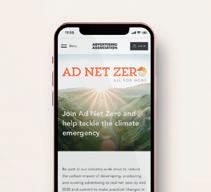
Ad Net Zero states that their mission is for immediate, collective industry action to help achieve real net zero carbon emissions from the development, production and media placement of advertising by the end of 2030. Individuals and companies seeking to support Ad Net Zero and make a real change to address the climate emergency can sign-up to the Ad Net Zero hub.
To mark the Ad Net Zero launch, the AA published a report by its Climate Action Working Group with Credos, UK advertising’s think tank,
in which it estimates total UK agency operational CO2e emissions to exceed 84,000 tonnes a year.
Credos estimates 42% of that comes from energy usage and 58% from business travel, with the biggest single contribution coming from flights and on the same basis, the industry as a whole could have a carbon footprint of nearer a million tonnes.
albert
wearealbert.org
Wearealbert has been established to lead a charge against climate change; bringing the film and TV industries together to tackle the environmental impact and inspiring screen audiences to act for a sustainable future.
The creative industries offer the greatest opportunity to mobilise positive action for the planet and so the organisation aims to lead a charge against climate change; uniting the screen industries to make a positive environmental impact and inspiring audiences to act for a sustainable future.
Based in the UK and founded in 2011, governed by an industry consortium, albert supports everyone






working in film and TV to understand their opportunities to create positive environmental change.
Certified B Corporation bcorporation.uk
Also featured in the Producers and Procurers iQ ethics database, Certified B Corporations are businesses that meet the highest standards of verified social and environmental performance, public transparency, and legal accountability to balance profit and purpose.
B Corps are accelerating a global culture shift to redefine success in business and build a more inclusive and sustainable economy.
Society’s most challenging problems cannot be solved by government and non-profits alone. By harnessing the power of business, B Corps use profits and growth as a means to a greater end: positive impact for their employees, communities and the environment.
The B Corp community works toward reduced inequality, lower levels of poverty, a healthier environment, stronger communities and the
creation of more high quality jobs with dignity and purpose.
#ChangeTheBrief
Alliance
changethebrief.org
#ChangeTheBrief Alliance is a not-for-profit partnership between agencies of every size and type – media, creative, design, PR – and their clients, learning and acting together to directly address the challenge of the climate crisis by promoting sustainability via every channel available to them.
The Alliance provides an on demand and face to face learning programme and community to all of its members, offering insights and expert advice at a category level on how we can adapt our work to promote more sustainable choices and behaviours in line with a zero-carbon world.
Alone, agencies will struggle to make a difference, but together we’re a formidable force that has the expertise to disrupt, influence and initiate real change. And that could make a real difference to attitudes, lifestyles, behaviours and ultimately, our future on the planet.
Clima climauk.com

Clima specialises in working with media organisations to design their environmental management systems and provide them with an effective pathway to reach their net zero goals.
The organisation’s services range from implementing simple solutions which take into account basic measuring and reporting of carbon emissions, all the way to full
theReview 72 pxpiq.com
environmental management system frameworks that can form part of an ESG report.
Run by Victoria Harvey and Rachel Smy, Clima identifies environmental aspects and advises controls in order to mitigate and ensure compliance as well as full CO2e measuring and reduction.
Measuring and reporting business emissions, they express, should be an accessible task that is available to all organisations no matter the size and scale. The organisation encourages every business to make a difference, reduce their emissions and help keep the planet to within 1.5 degrees of warming.
EcoVadis

ecovadis.com

Since its founding in 2007, EcoVadis has grown to become the world’s largest provider of business sustainability ratings, creating a global network of more than 75,000 rated companies.
Co-Founded by Co-CEOs
Pierre-François Thaler and Frédéric Trinel, Ecovadis envisions a global marketplace where sustainability intelligence influences every business decision – improving economies, people’s lives and the planet we all depend on.
EcoVadis is based in Paris, France, however the organisations also have offices in the United States, United Kingdom, Germany, Poland, Canada, Tunisia, Mauritius, Japan, Hong Kong, Australia and Spain. EcoVadis is used across the world where brands need more generalised support.
Flock Associates –The Sustainable Marketer

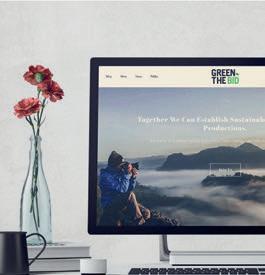
flock-associates.com
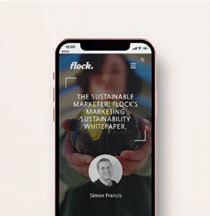
According to the WFA, whilst 95% of marketers believe that marketing can make a difference in the sustainability journey, there is still a lack of application, with 50% citing their marketing organisations are “about to start” or still “taking first steps”.
Created by Flock, “The Sustainable Marketer”, is a Marketing Sustainability Whitepaper to help fill this gap between a desire to do something and action. “The Sustainable Marketer” offers a definition for Marketing Sustainability, evidence for why Marketing Sustainability matters, introduces three important frameworks to help marketing organisations build a Marketing Sustainability Strategy and
examples, useful resources and case studies from partners at WARC.
The report is not designed to be allencompassing or complete and it will be updated as Flock’s work with clients progresses. The report is freely available to the marketing industry, as the company acknowledges its responsibility to the community and the world at large.
Green the Bid greenthebid.earth
Green The Bid has created the framework for widespread industry adoption, with the aim to be leaders in this effort by making productions carbon neutral.
The grassroots initiative supports the advertising industry in shifting to zerowaste, carbon neutral, sustainable and regenerative practises. Green the Bid is a volunteer coalition, led by its founding members Jessie Nagel, Kat Friis, Gabi Kay, Julian Katz and Michael Kalisnki. This is as well as the stakeholders of the commercial community.
As part of their sustainability goals, big brands are beginning to step up and make their own
contributions as well as increasing numbers of production agreements that require shoots to be sustainable. Green the Bid has advice for brands and clients, advertising agencies, production companies and post-production as well as vendors and crew members.
Green Element greenelement.co.uk
20 years ago, the founder and CEO of Green Element Will Richardson, had travelled around the world and saw first-hand the impact of climate change. After working for a variety of different businesses, he made what would be a lifechanging decision: to dedicate his life to contribute towards a sustainable future for the generations to come.
Green Element was born to put sustainability at the heart of as many organisations as possible. The Green Element team has helped over 120 organisations become more sustainable, by tracking carbon footprints, environmental management and life cycle analysis.
Based in London, the organisation is one of the first B Corps to become certified in the UK. Through meeting a set of rigorous criteria, Green Element demonstrates support for the pioneering global #Bthechange movement: driving people to use business as a force for good.
The organisation offers environmental courses, coaching programmes, resources and podcasts to inform businesses of how they can operate sustainably and in the past has worked with the likes of IPG Mediabrands.
73 pxpiq.com
__Ethics and Ecology
Planet Pledge –World Federation of Advertisers (WFA)
wfanet.org

Launched by the WFA, Planet Pledge is an initiative which is designed to put marketers in a position where they can help lead brands’ responses to climate change, encourage efforts across the wider marketing industry and help consumers act more sustainably when using their products and services.
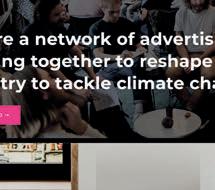
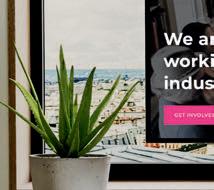
Planet Pledge is a CMOled framework designed to galvanise action from marketers to promote and reinforce attitudes and behaviours which will help the world meet the challenges laid out in the UN Sustainable Development Goals.
The pledge was launched at WFA’s Global Marketer Week and aims to encourage CMOs to take action in four key areas:
Commit to being a champion for the global Race to Zero campaign both internally within their
organisations and to encouraging their marketing supply chain to do the same; Scale the capability of marketing organisations to lead for climate action by providing tools and guidance for their marketers and agencies; Harness the power of their marketing communications to drive more sustainable consumer behaviours; Reinforce a trustworthy marketing environment, where sustainability claims can be easily substantiated so that consumers can trust the marketing messages they are presented with as they seek to align their own consumption with their values.
Purpose Disruptors
purposedisruptors.org
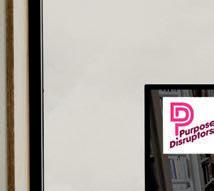
Purpose Disruptors aim to reshape the advertising and marketing communications industry to only promote attitudes, lifestyles, behaviours and brands aligned with a net zero world



by 2030.
Their vision is to create a visible, large scale movement within the industry, working together to make the necessary transition to meaningfully tackle climate change.
Purpose Disruptors offers information on how the advertising industry can take full responsibility for its climate impact, working to build the #ChangeTheBrief Alliance, as well as holding events and conducting research on the issue.


At the core, running the organisation, are the three Co-Founders and Directors Lisa Merrick-Lawless, Jonathan Wise and Rob McFaul. The core team is surrounded by a 1800 strong community of advisers, supporters and helpers from competing agencies as well as a small army of freelancers. Each giving their time, energy and support voluntarily to make change happen.
Purpose Disruptors have so far been funded by a number of charities and foundations including The JJ Charitable Trust, European
Race To Zero Campaign | UNFCCC unfccc.int

Race To Zero is a global campaign to rally leadership and support from businesses, cities, regions, investors for a healthy, resilient, zero carbon recovery that prevents future threats, creates decent jobs, and unlocks inclusive, sustainable growth.
It mobilises a coalition of leading net zero initiatives, representing 733 cities, 31 regions, 3,067 businesses, 173 of the biggest investors, and 622 Higher Education Institutions. These ‘real economy’ actors join 120 countries in the largest ever alliance committed to achieving net zero carbon emissions by 2050 at the latest. Collectively these actors now cover nearly 25% global CO2 emissions and over 50% GDP.
Led by the High-Level Climate Champions for Climate Action – Nigel Topping and Gonzalo Muñoz – Race To Zero mobilises actors outside of national governments to join the Climate Ambition Alliance, which was launched at the UNSG’s Climate Action Summit 2019 by the President of Chile, Sebastián Piñera. The objective is to build momentum around the shift to a decarbonised economy ahead of COP26, where governments must strengthen their contributions to the Paris Agreement. This will send governments a resounding signal that business, cities, regions and investors are united in meeting the Paris goals and creating a more inclusive and resilient economy. R
Climate Foundation and KR Foundation.
theReview 74 pxpiq.com
The global resource for marketing procurement content















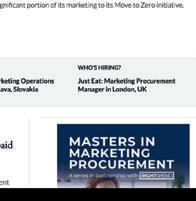
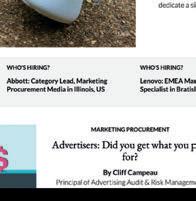
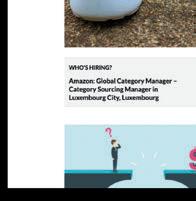

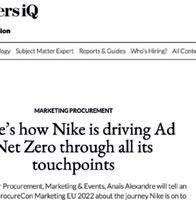











































































 By Lindsay Hong COO LOCARIA
By Lindsay Hong COO LOCARIA












 by Nick Swimer
by Nick Swimer

























 by Jennifer Brown
by Jennifer Brown


































































 - Jack Neff, Editor at Large, AdAge
- Jack Neff, Editor at Large, AdAge


























































